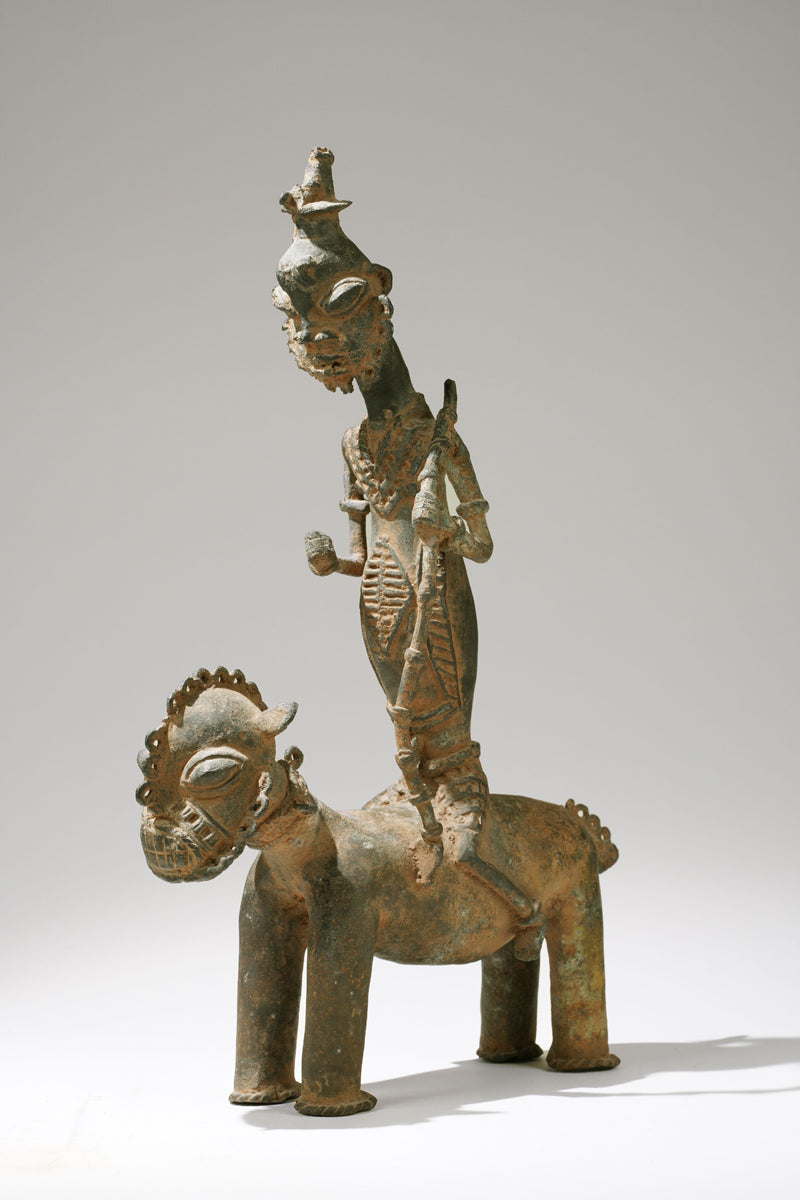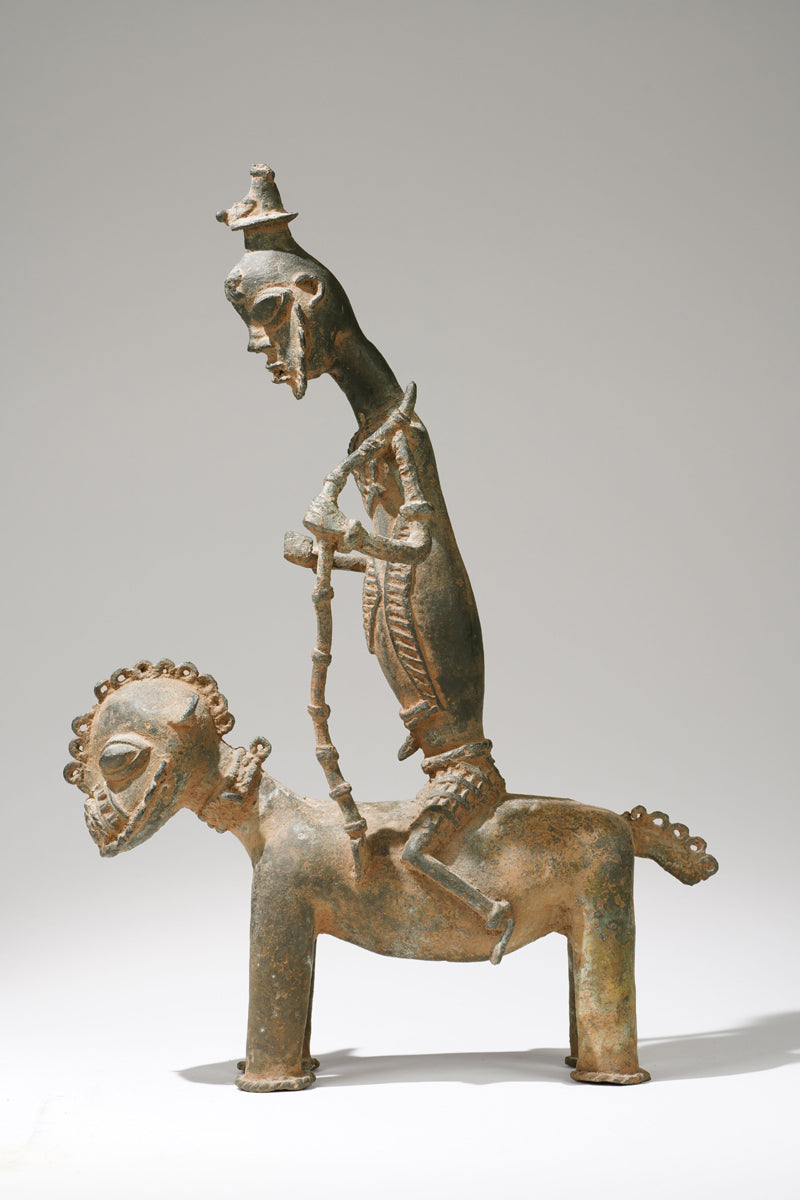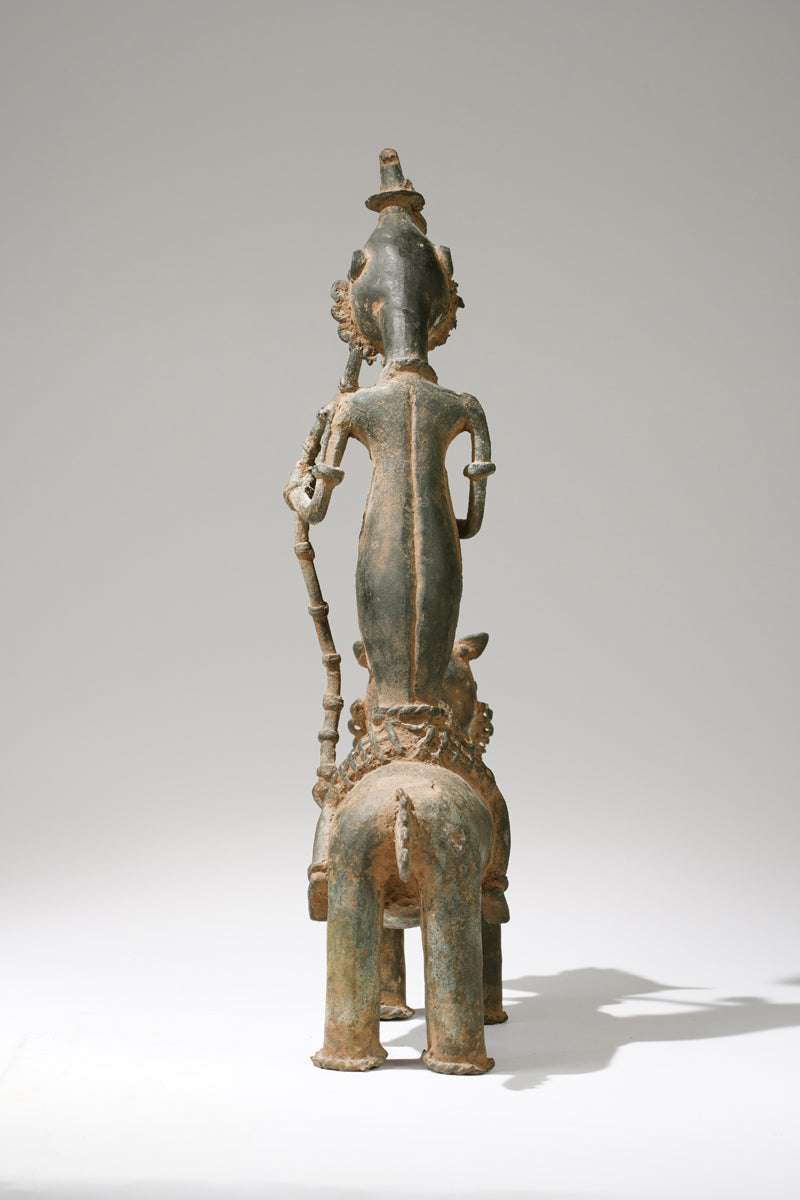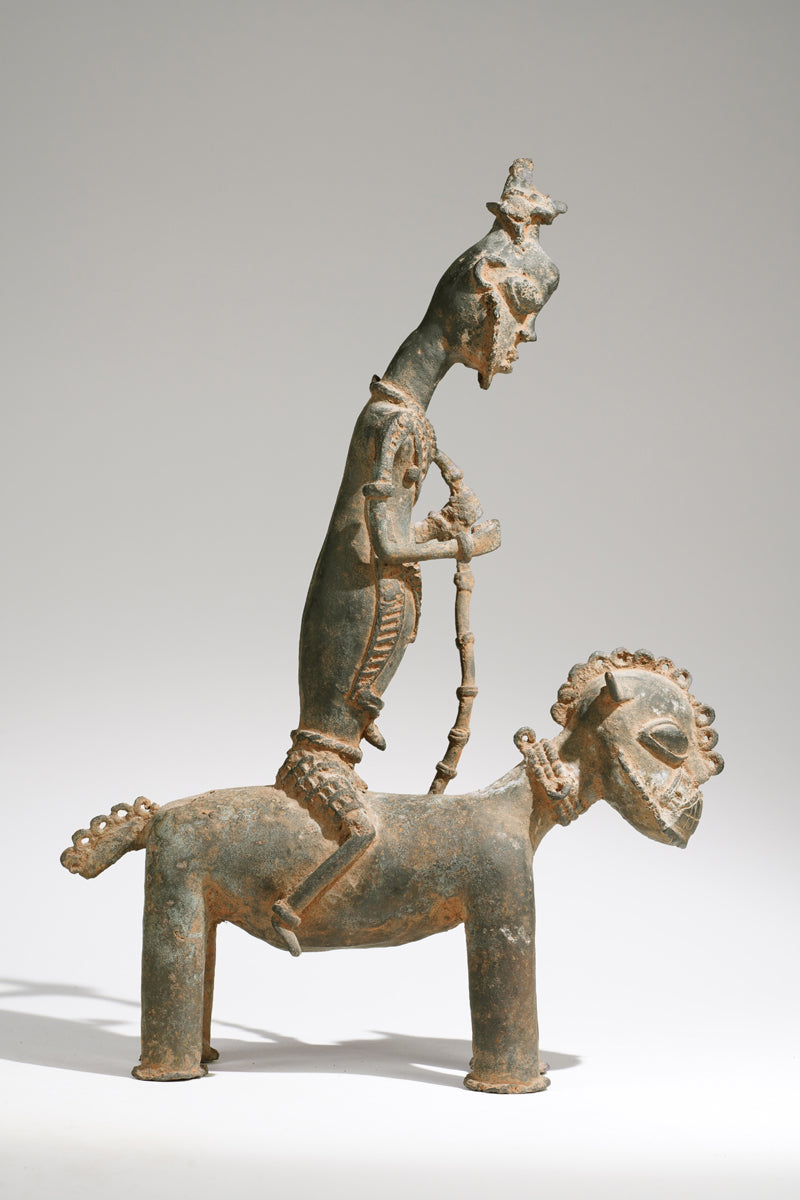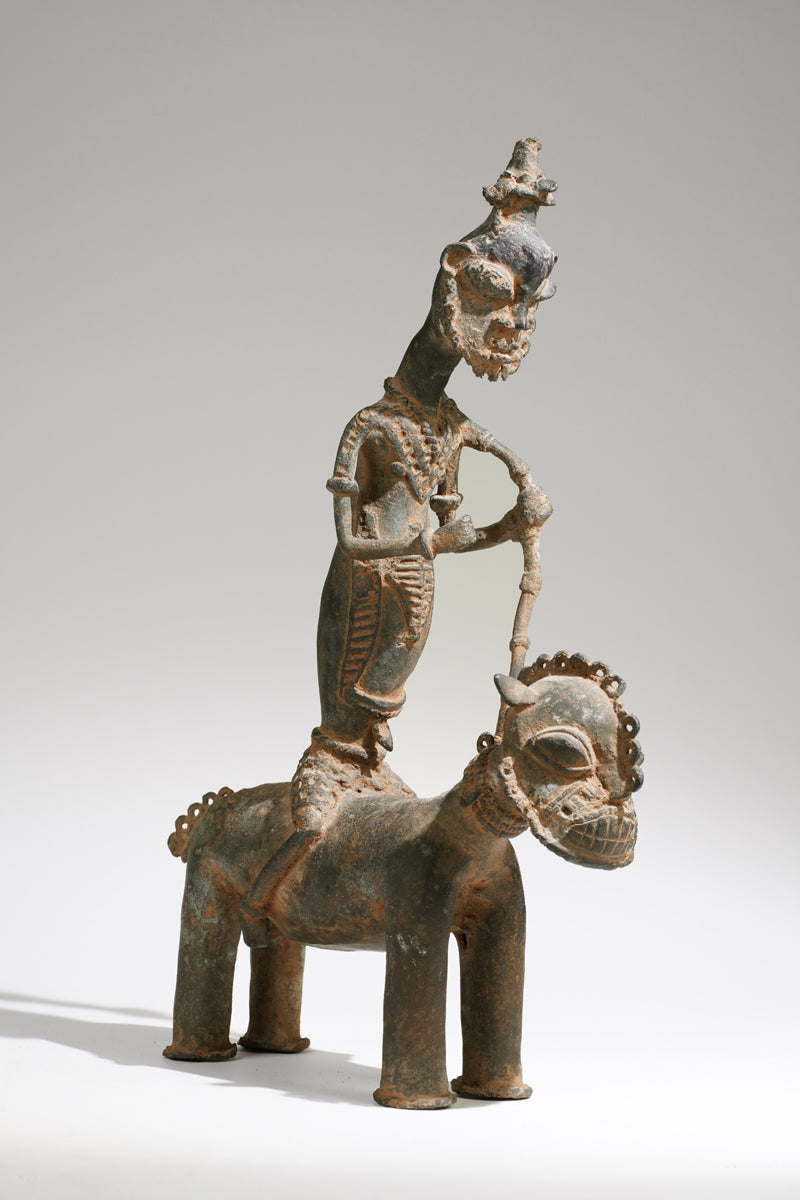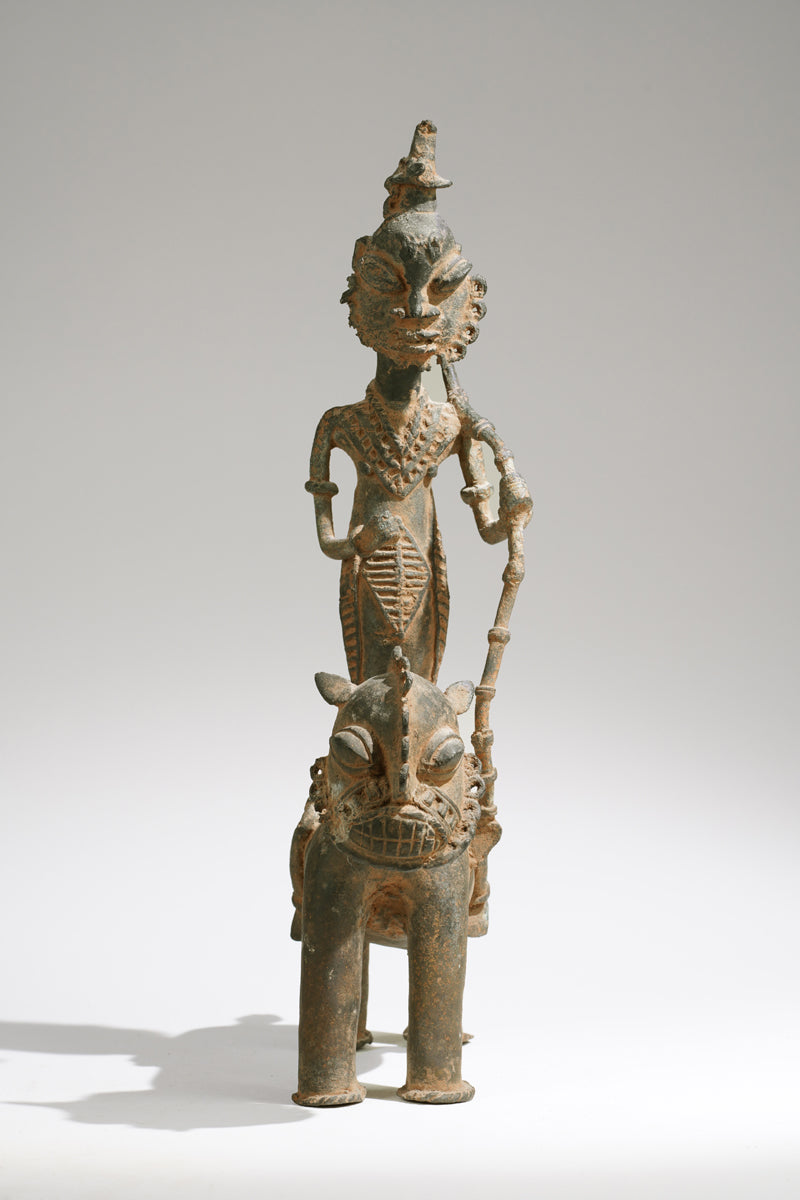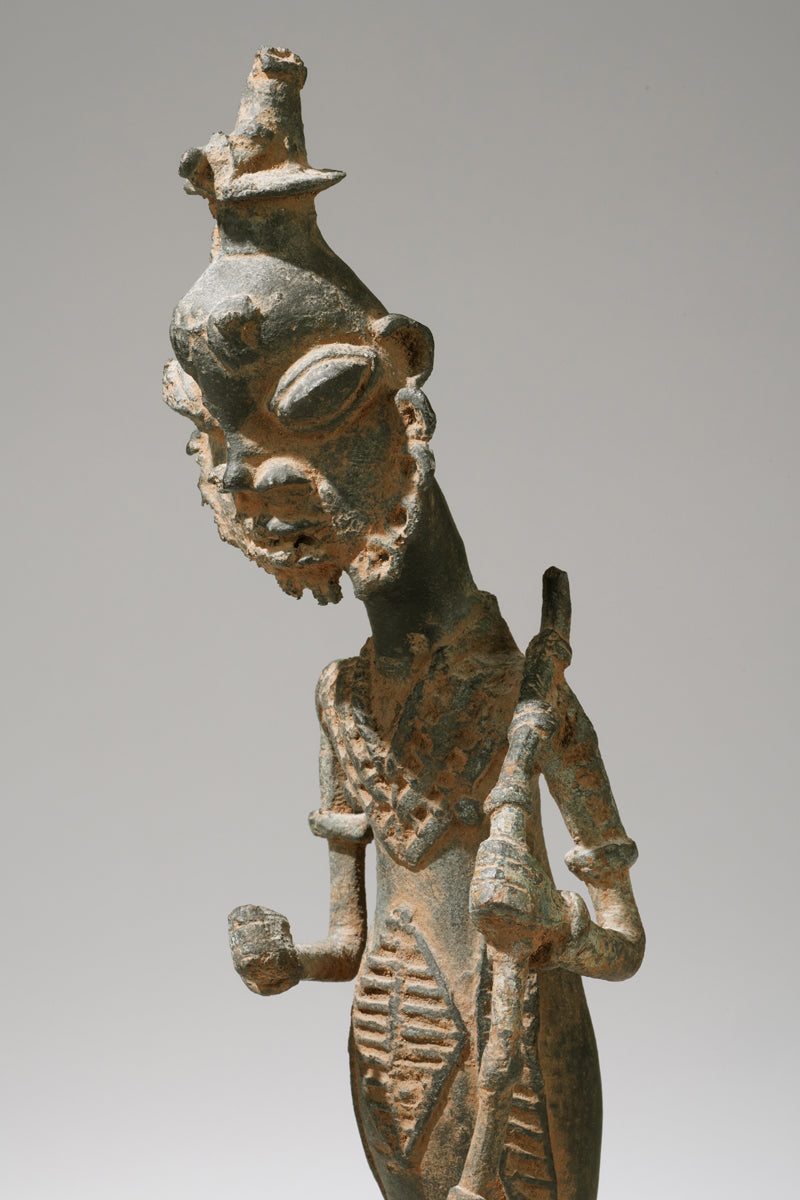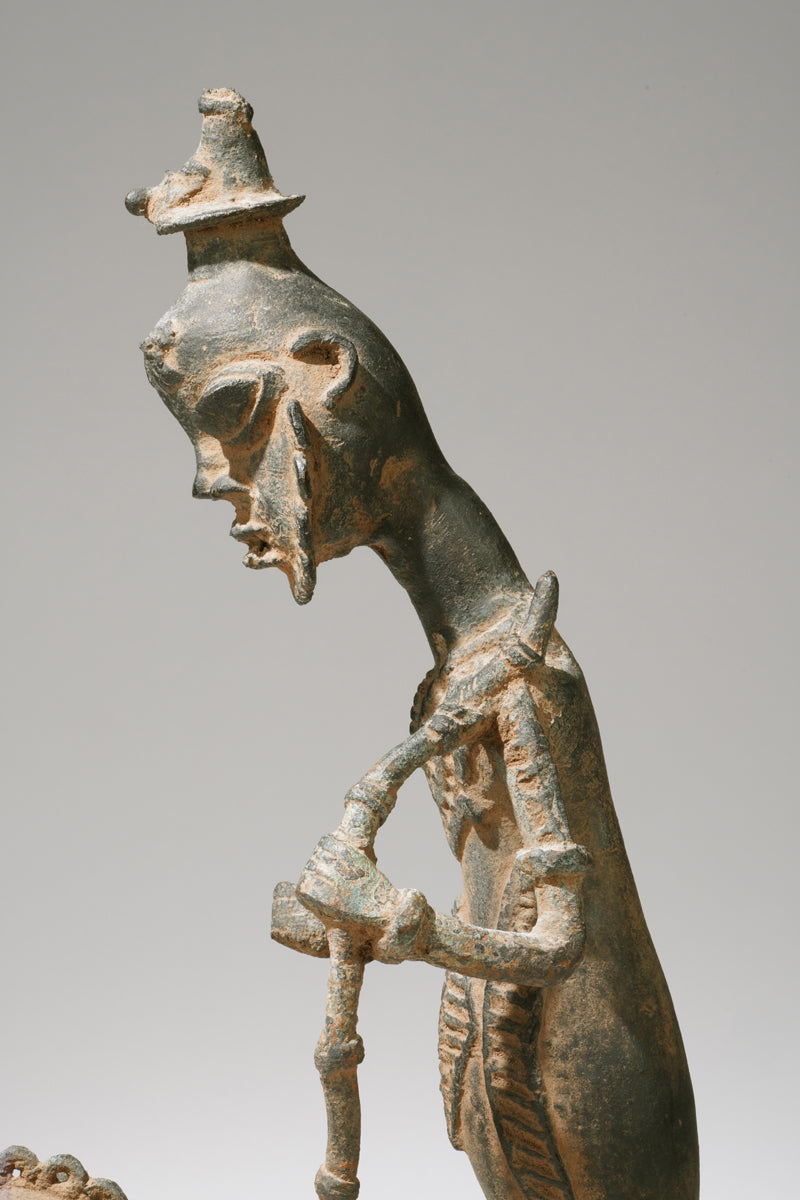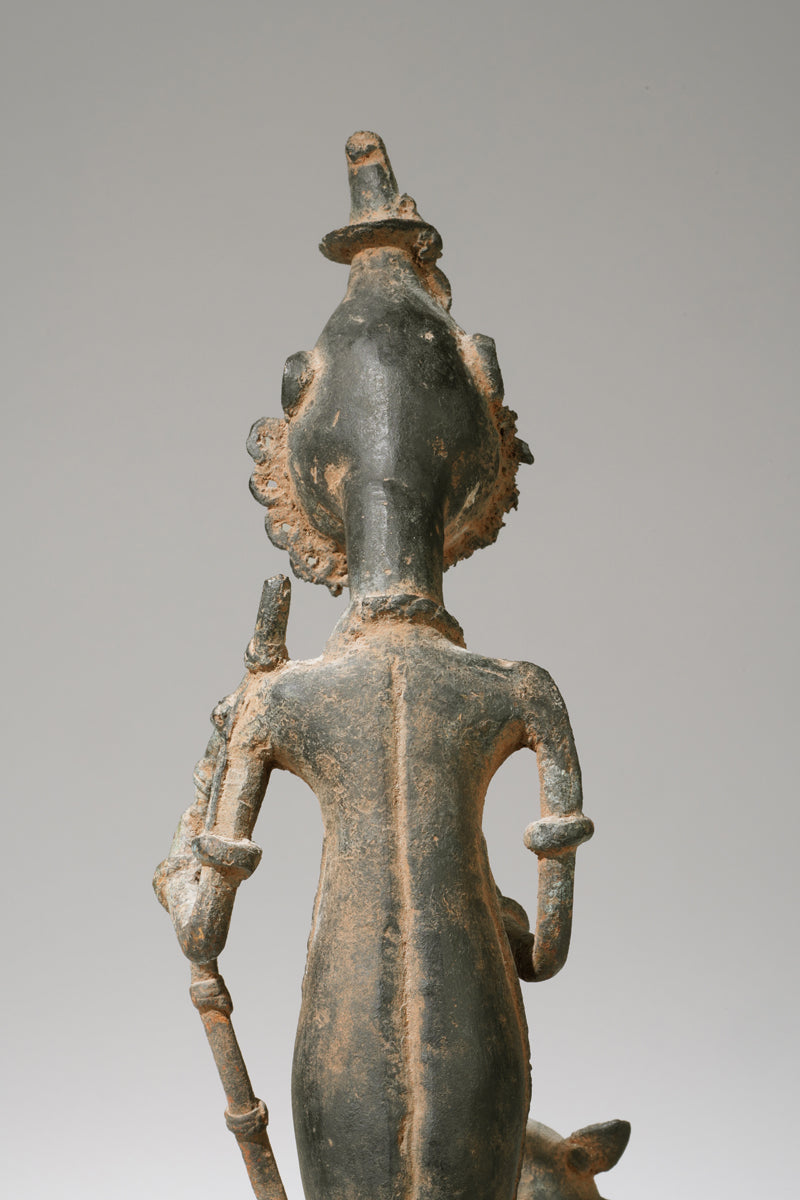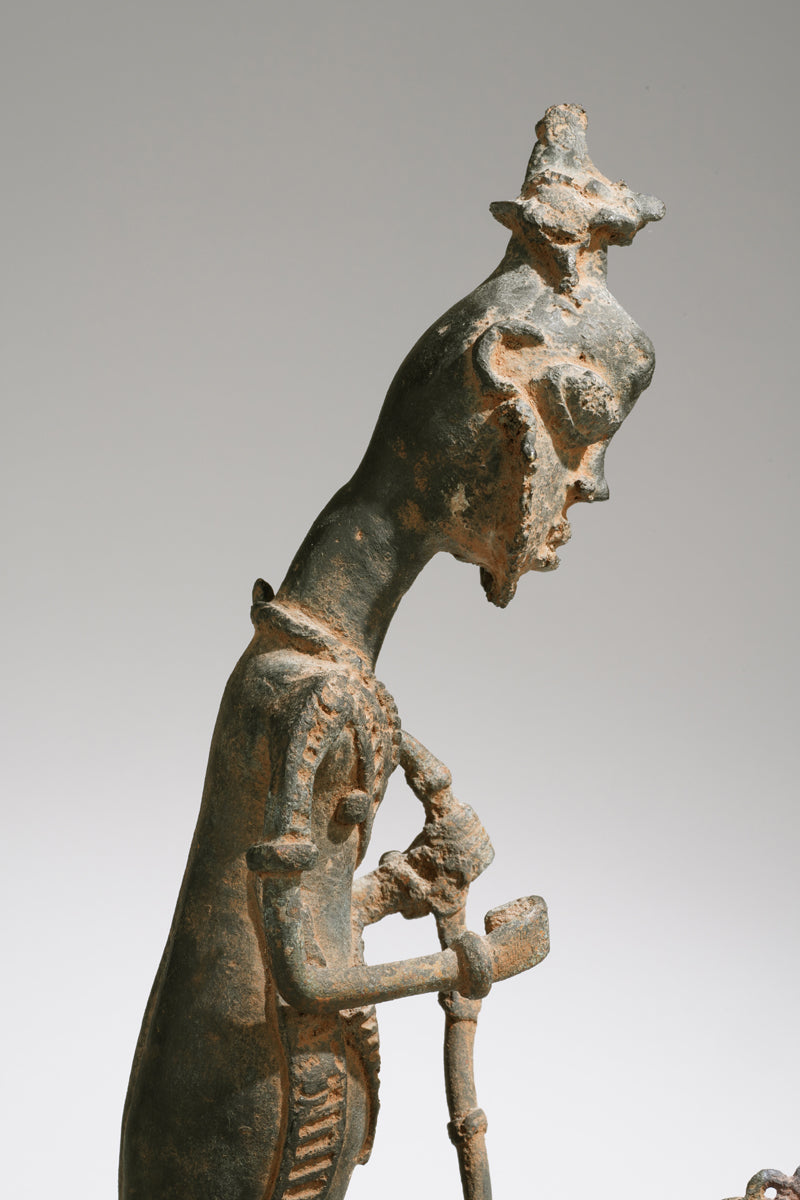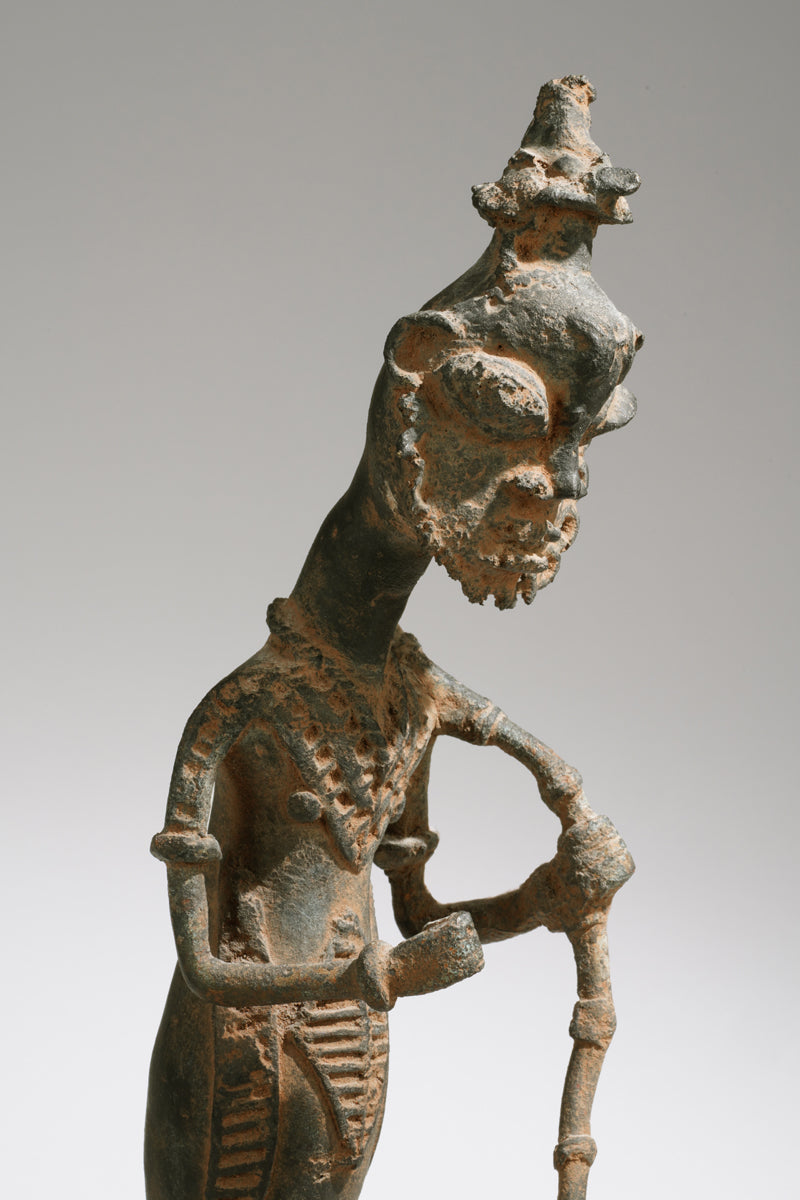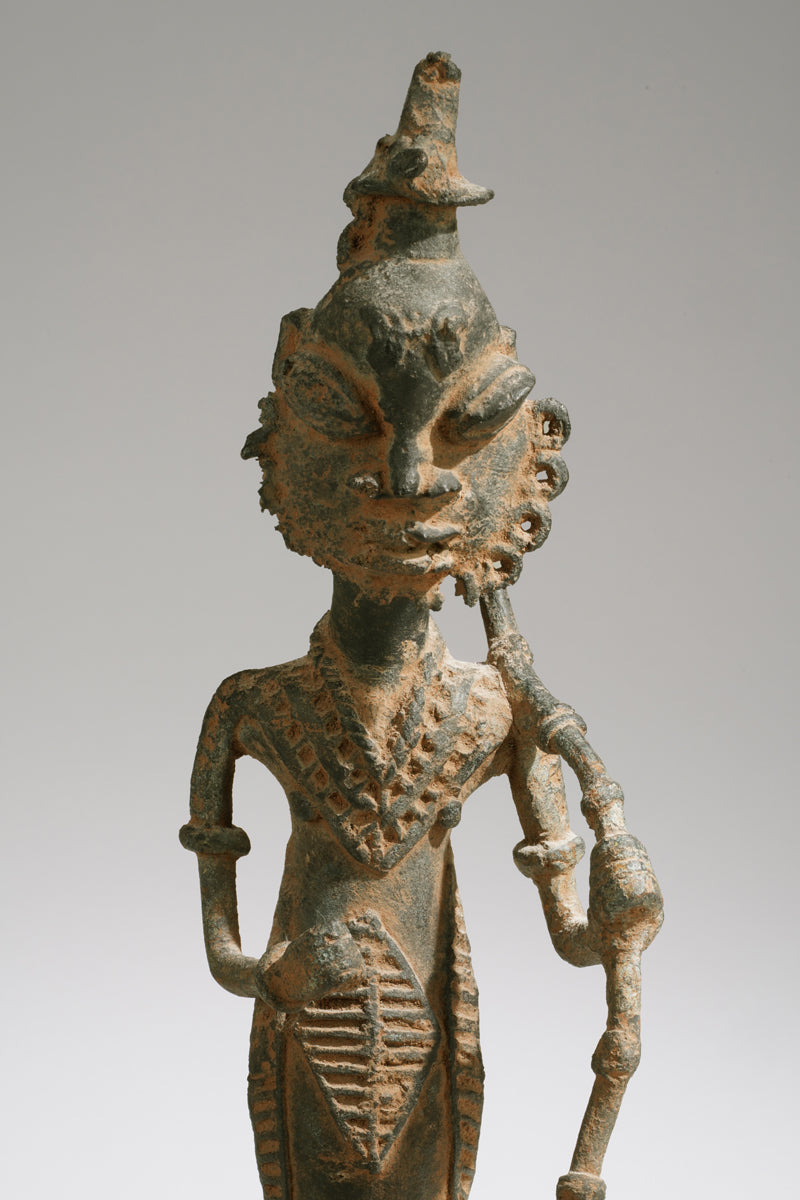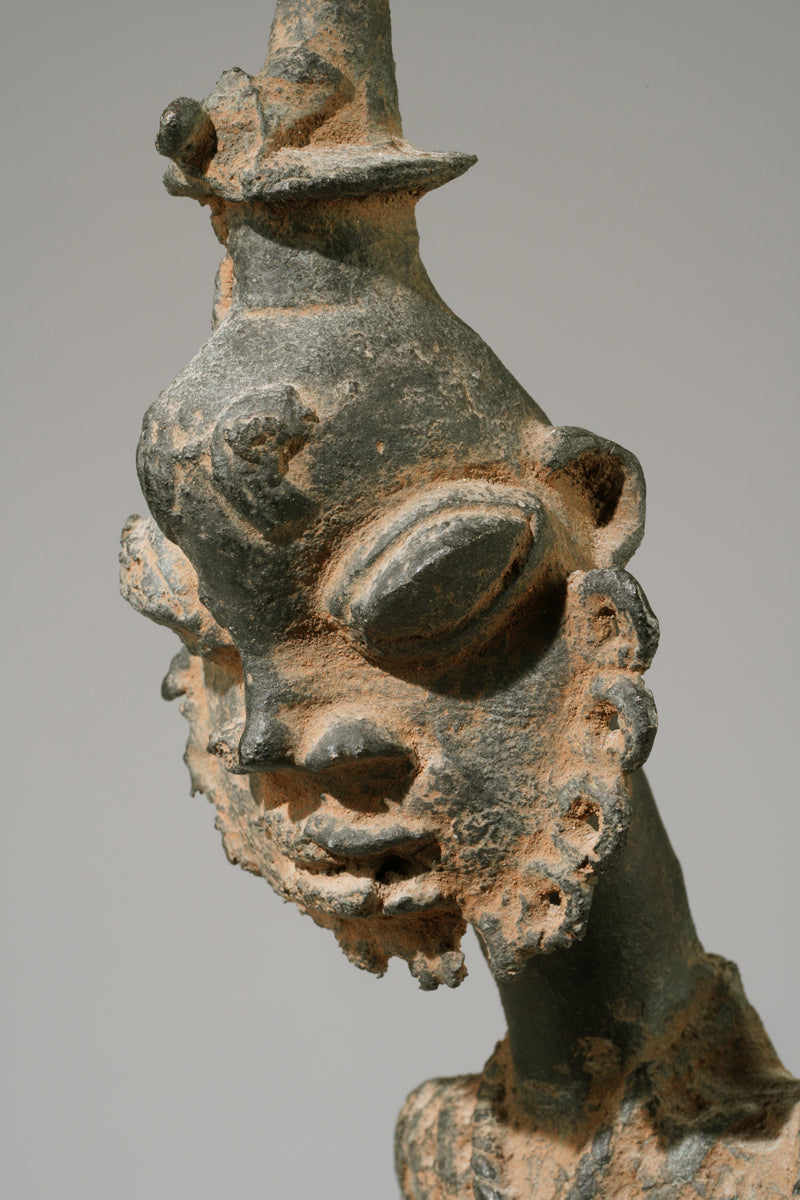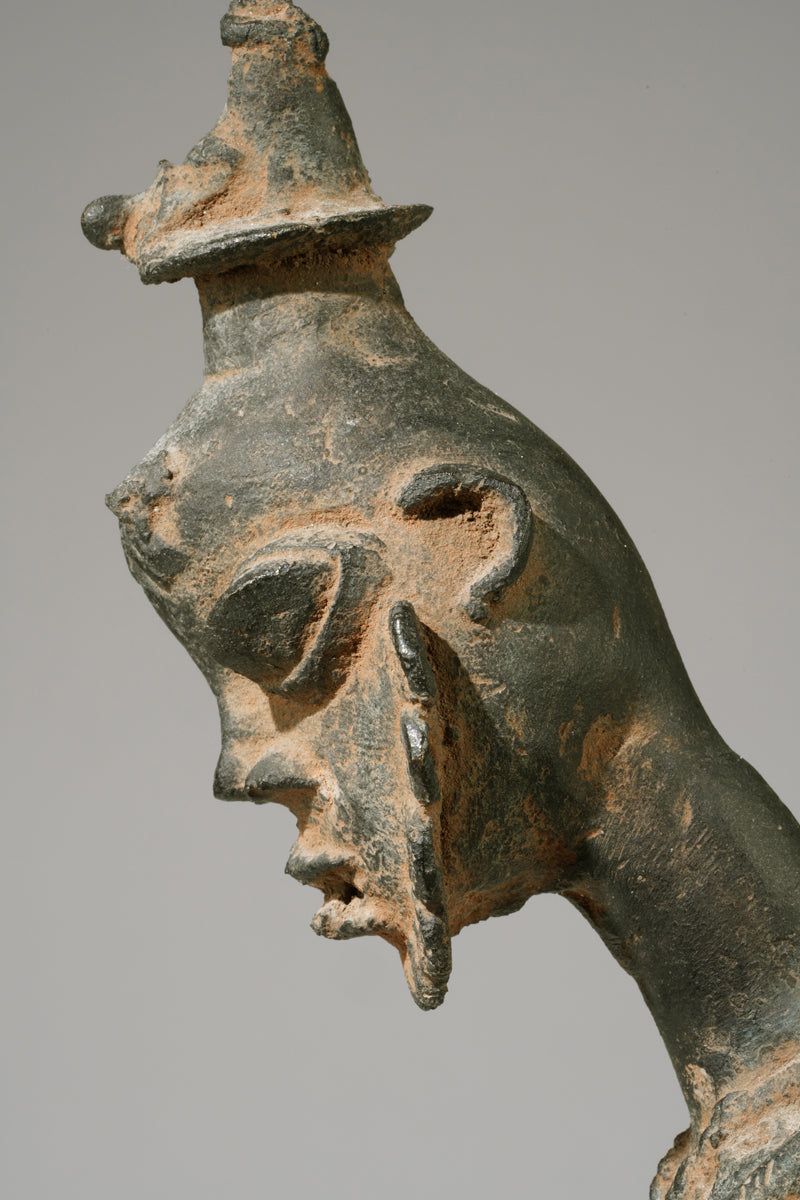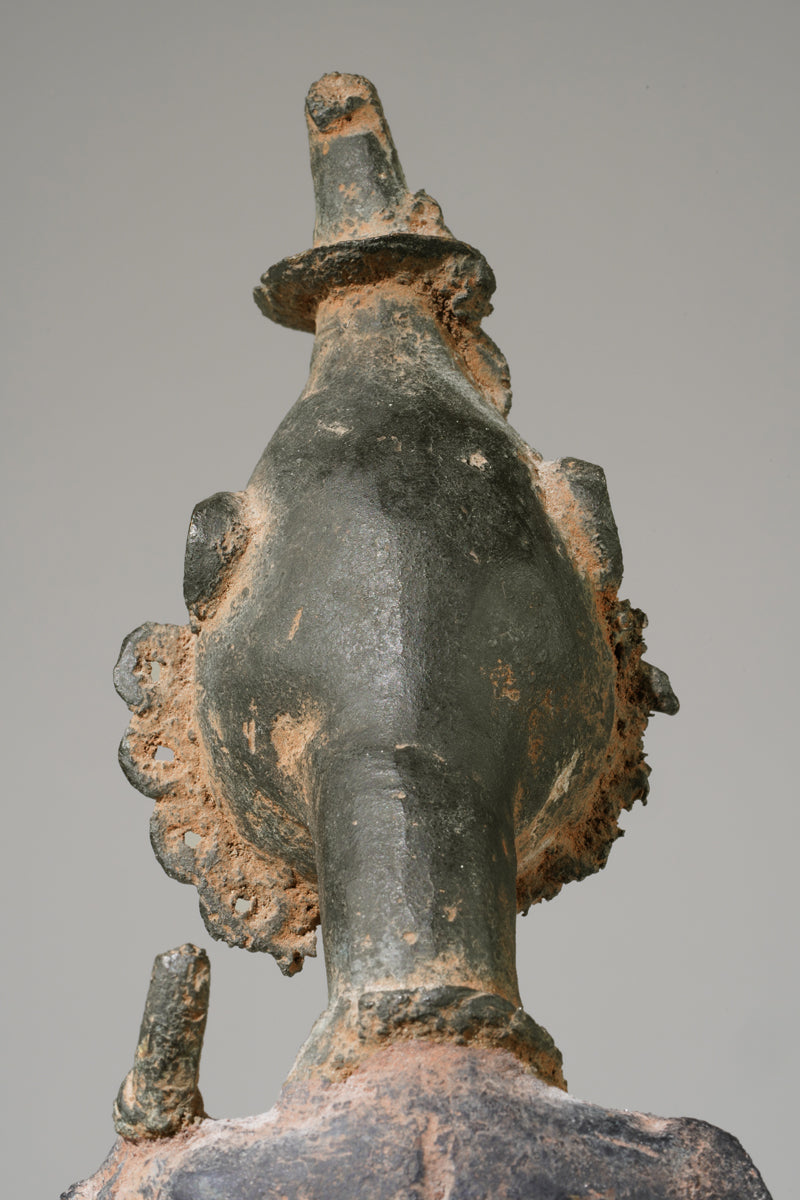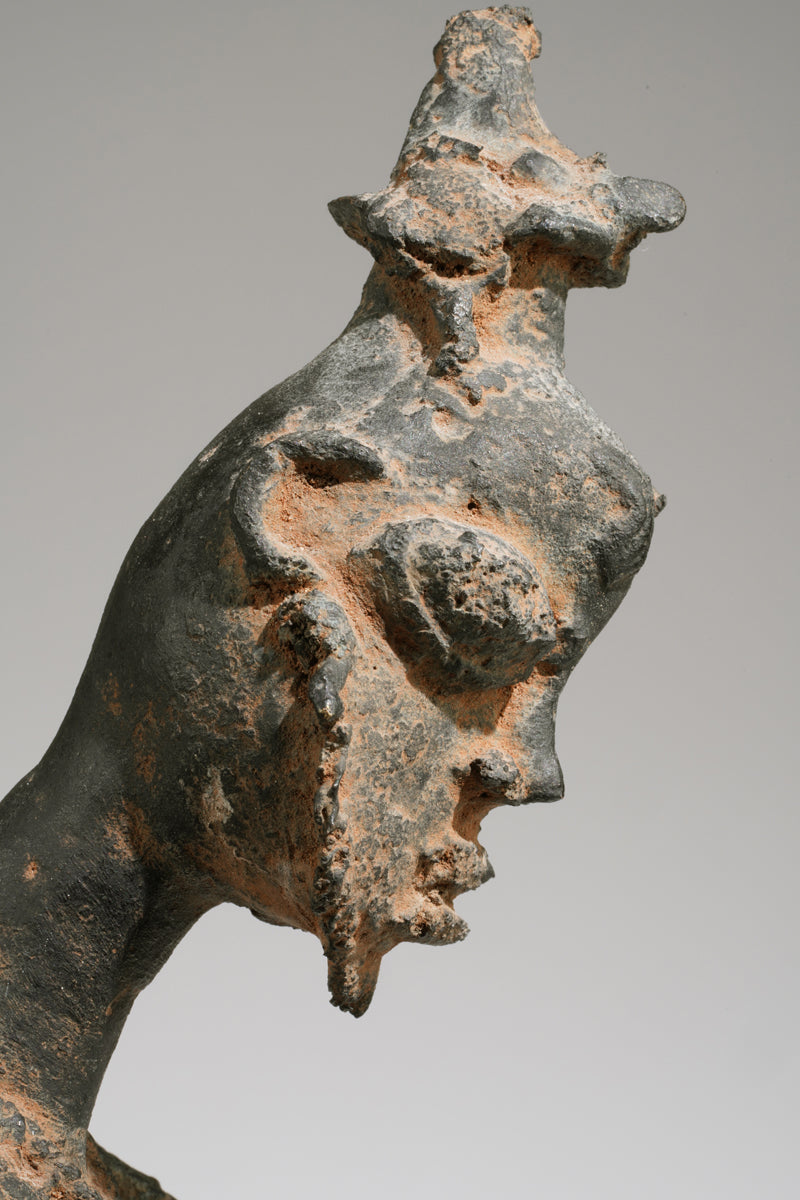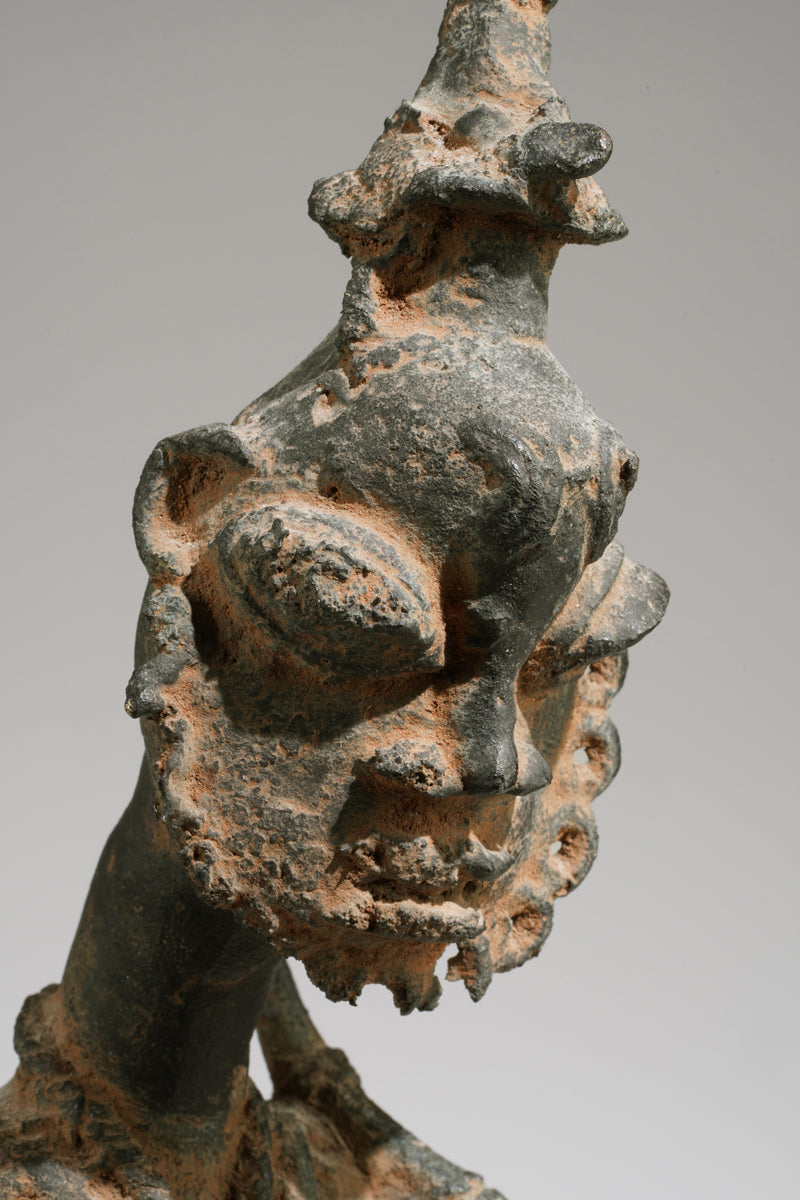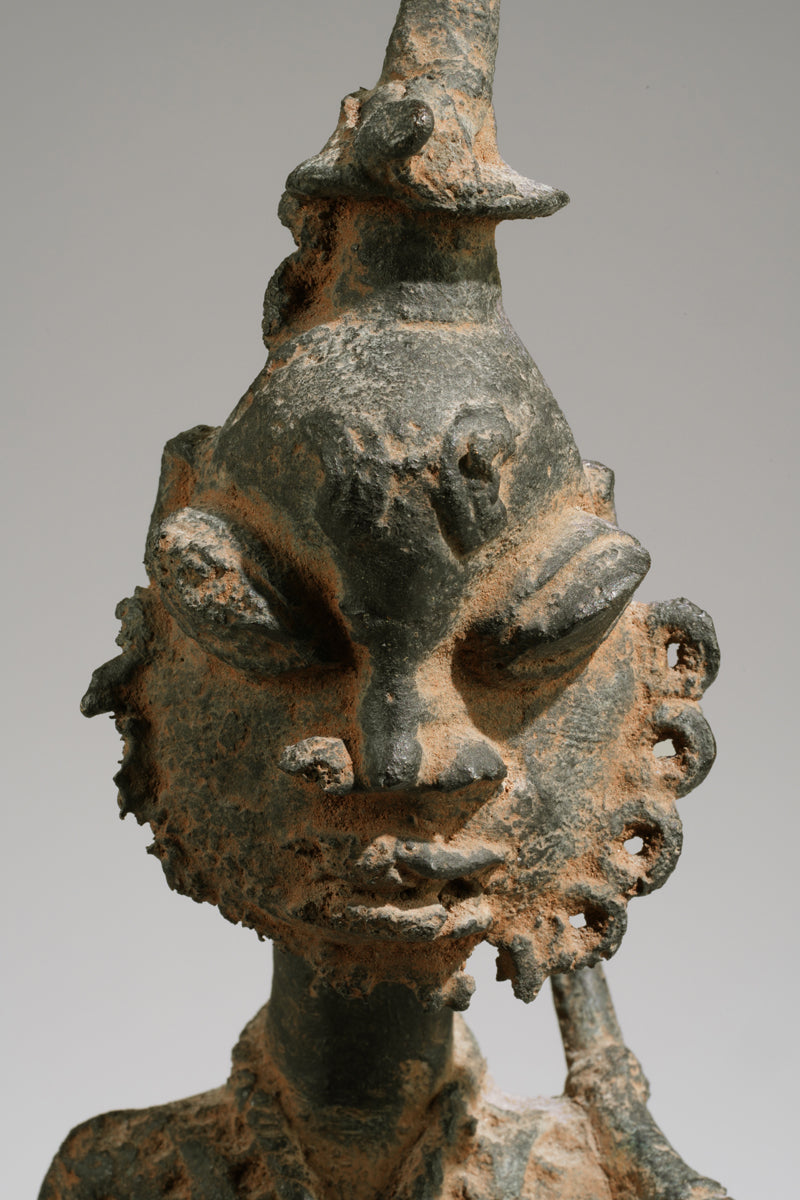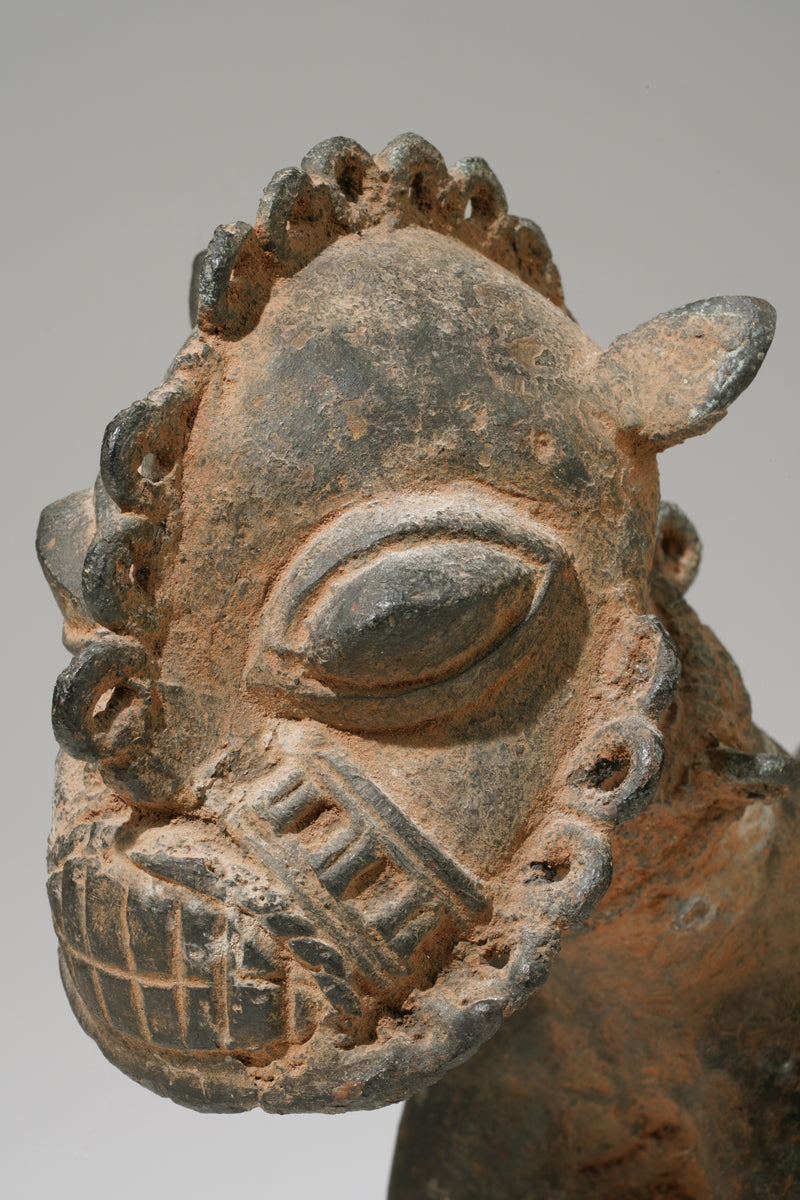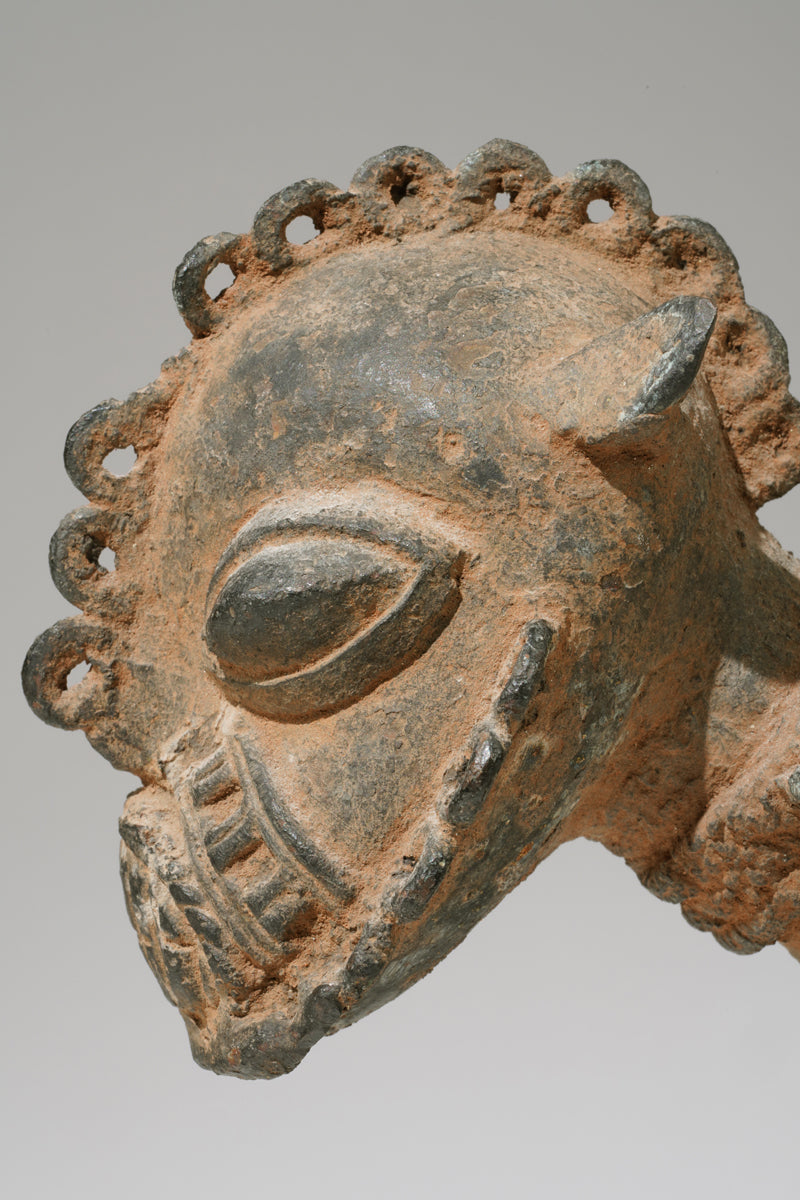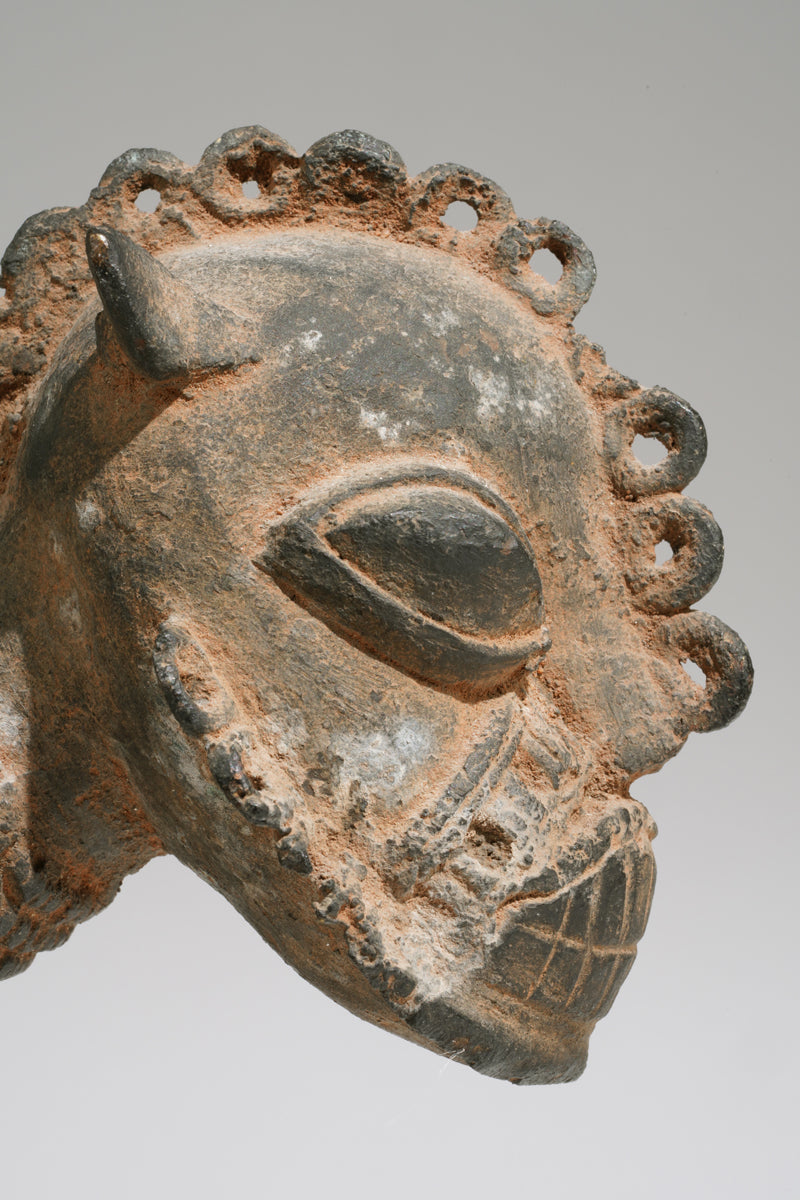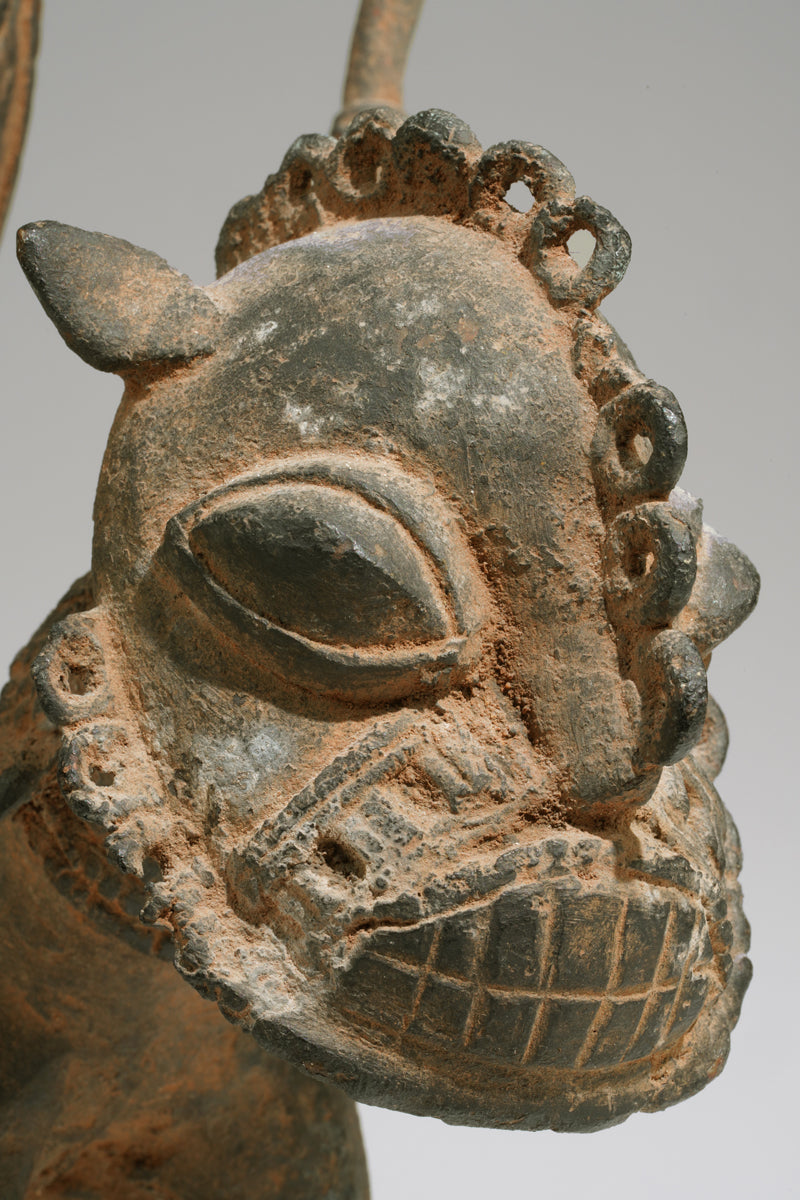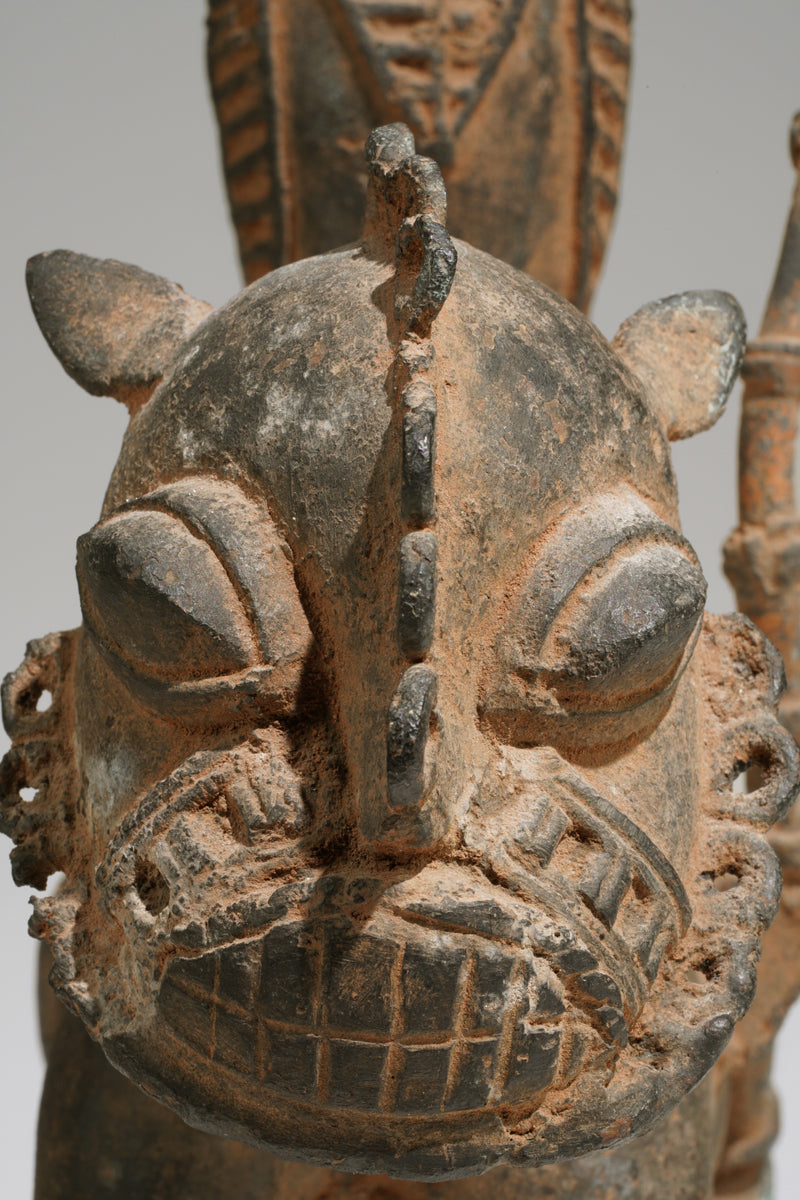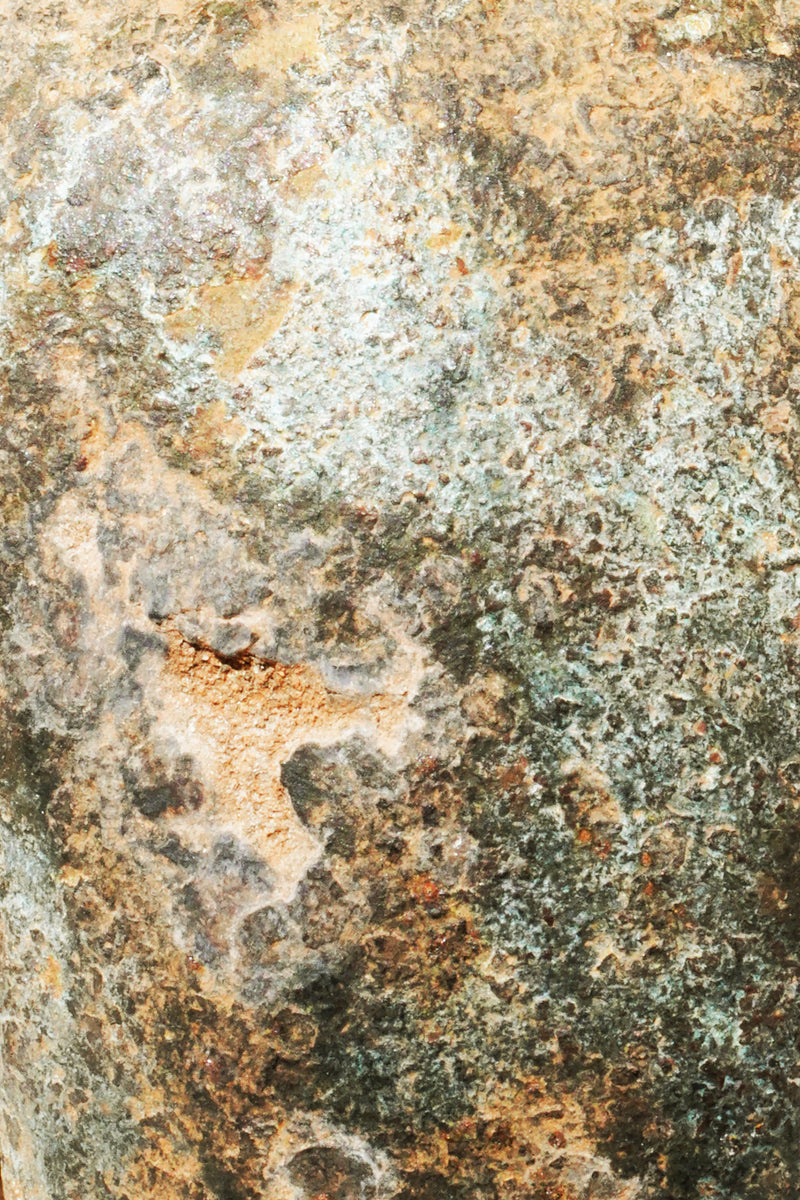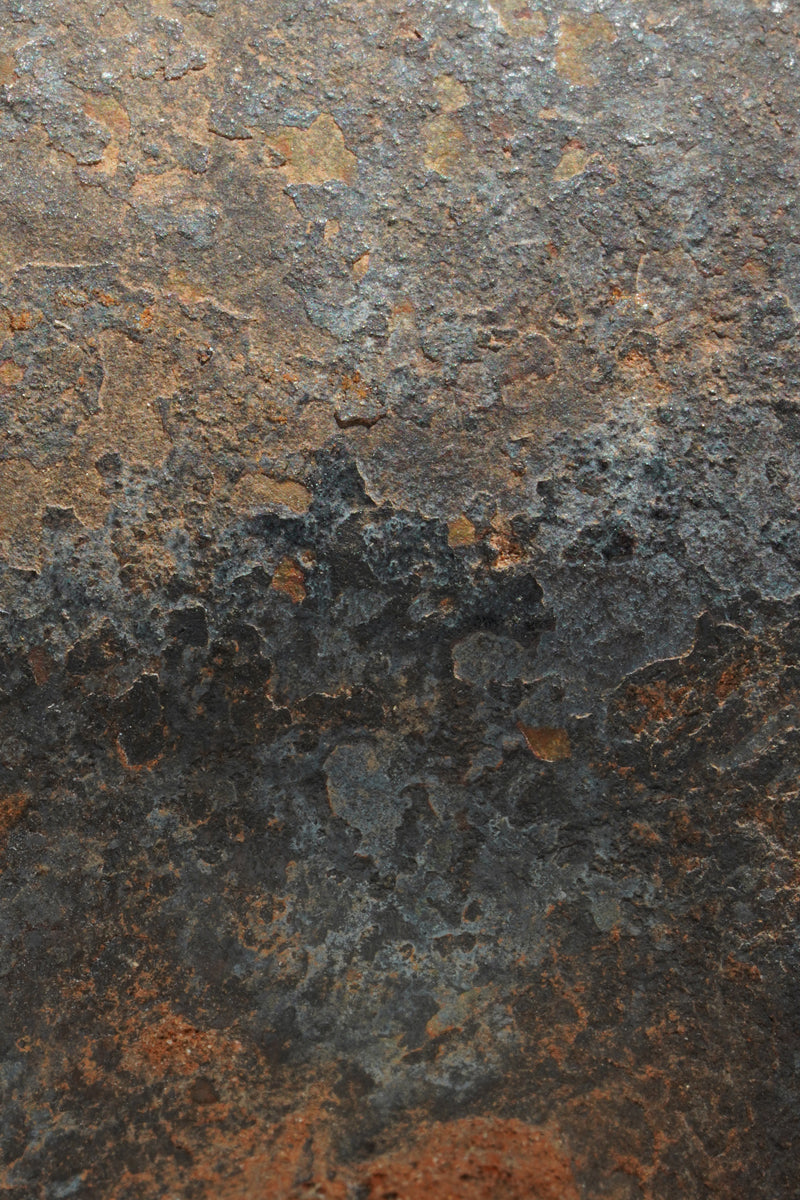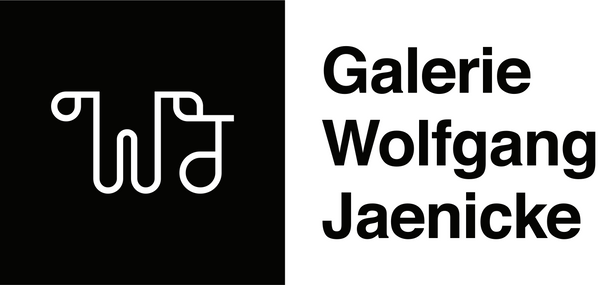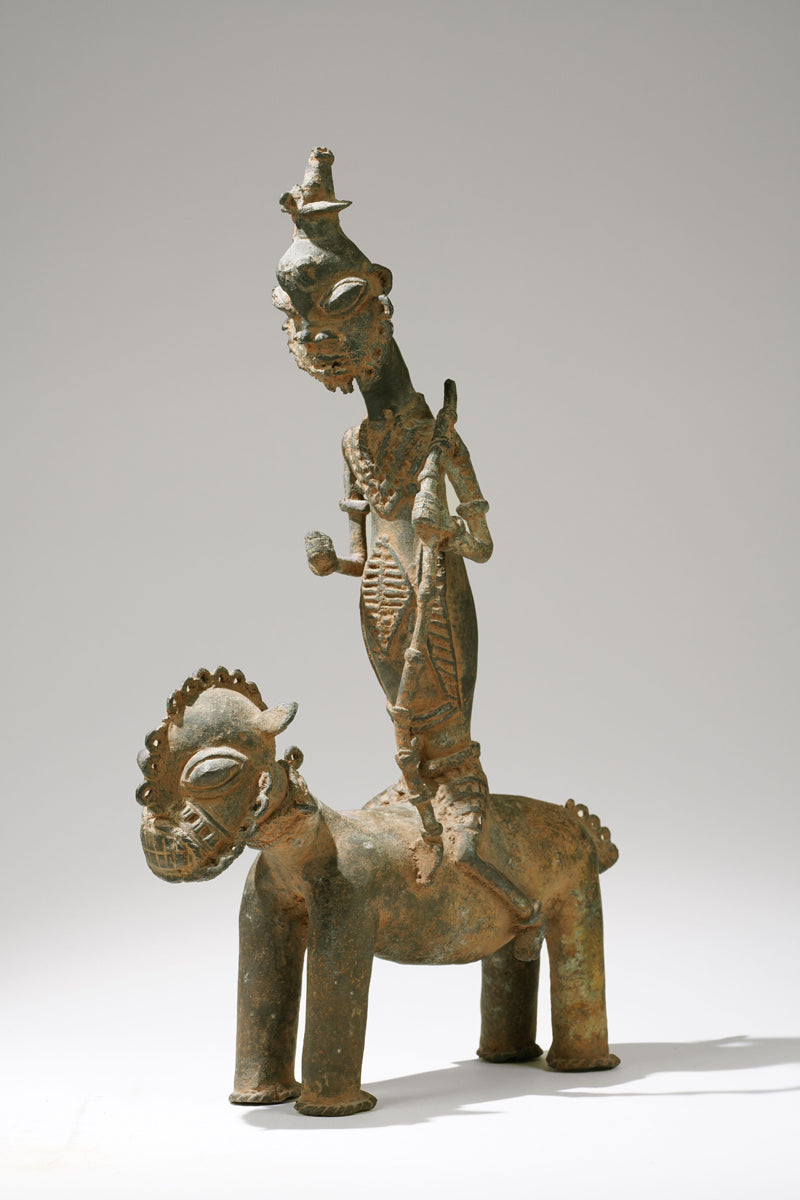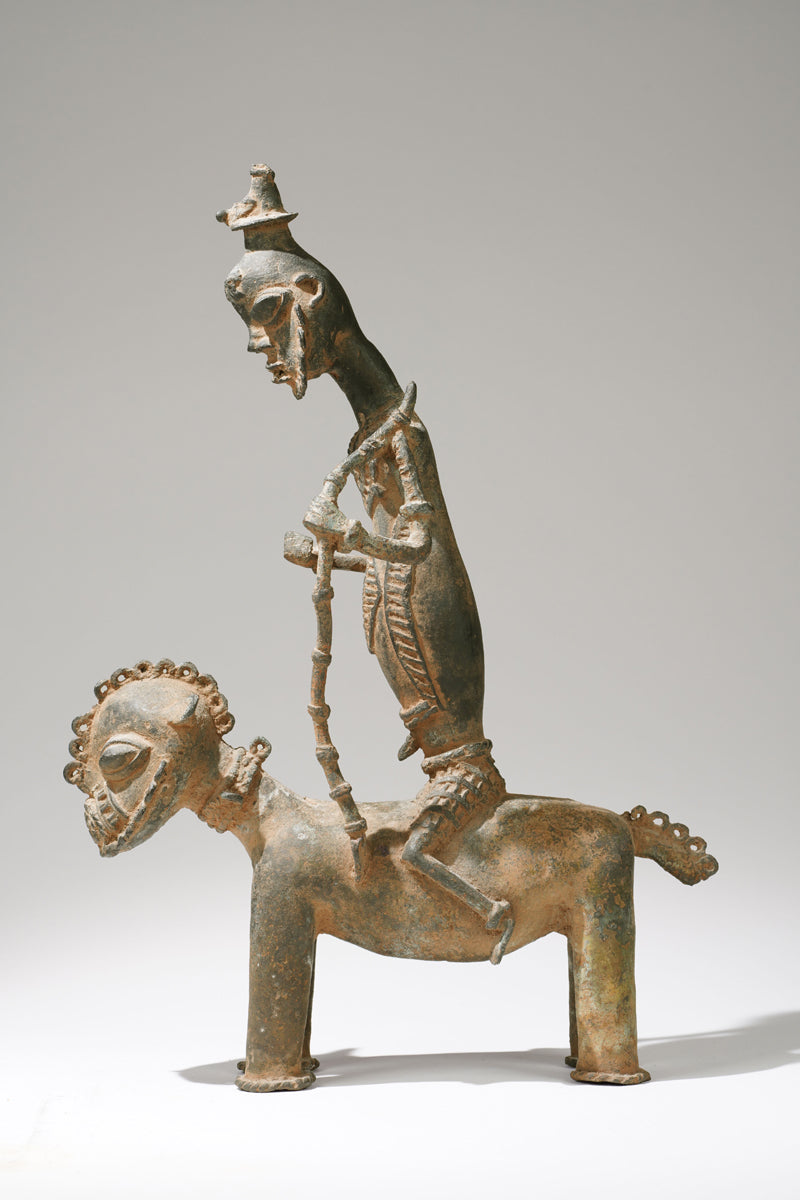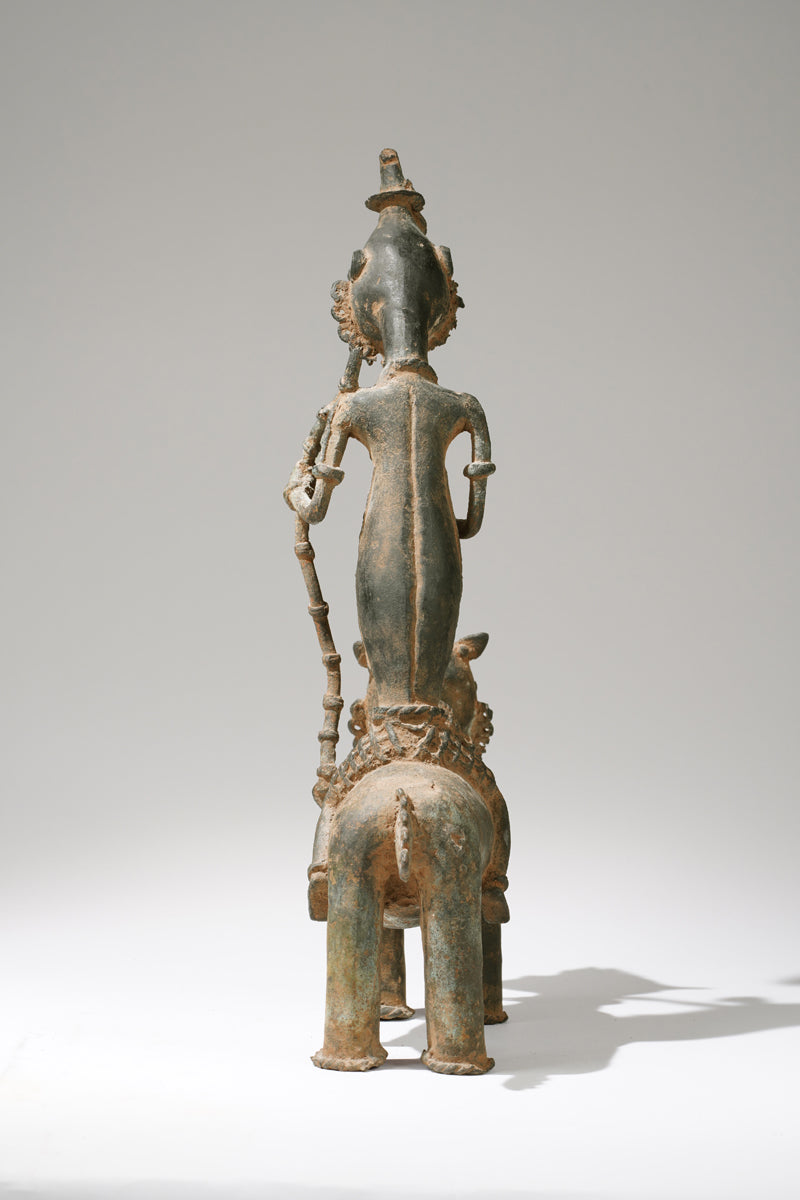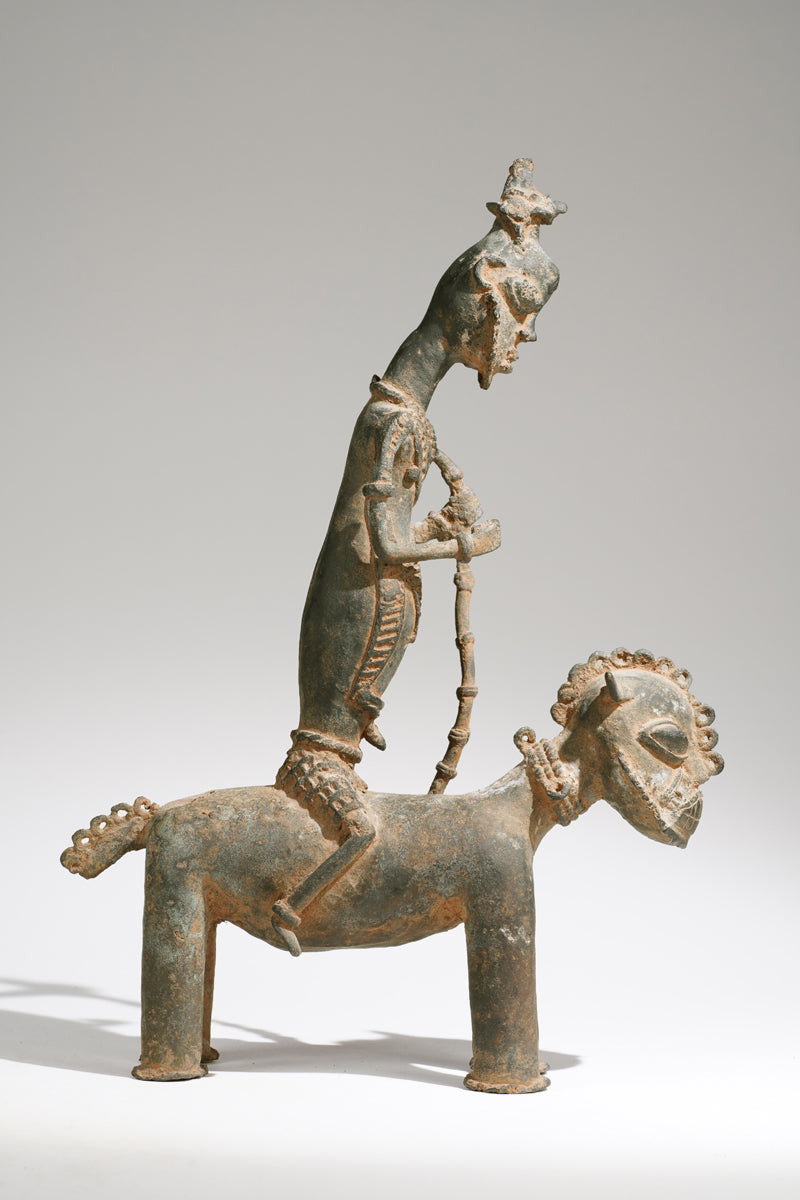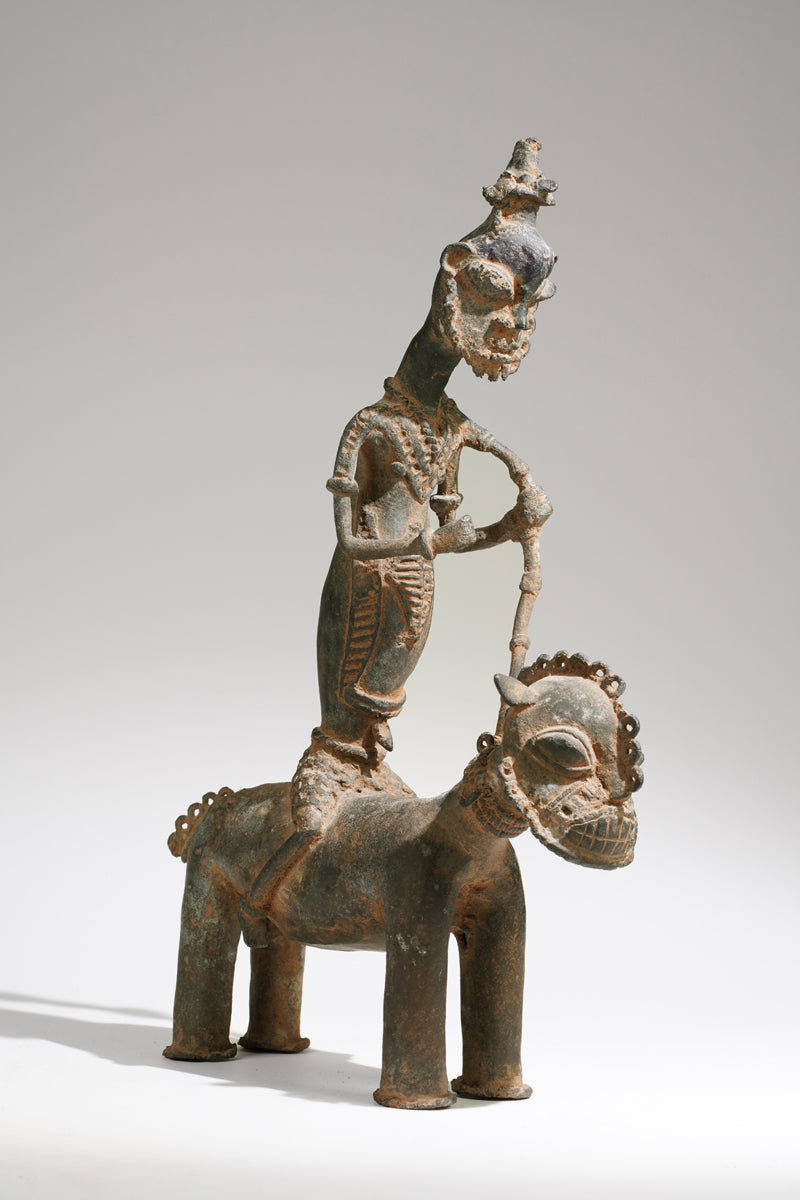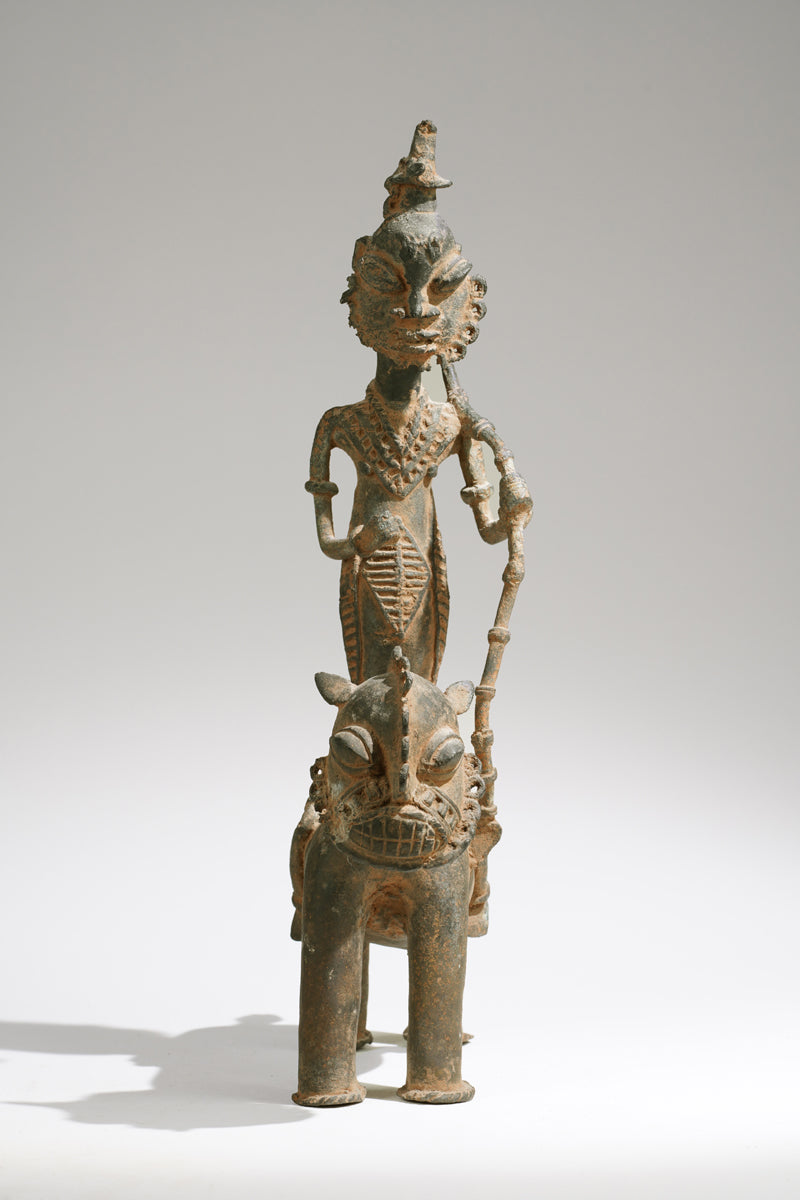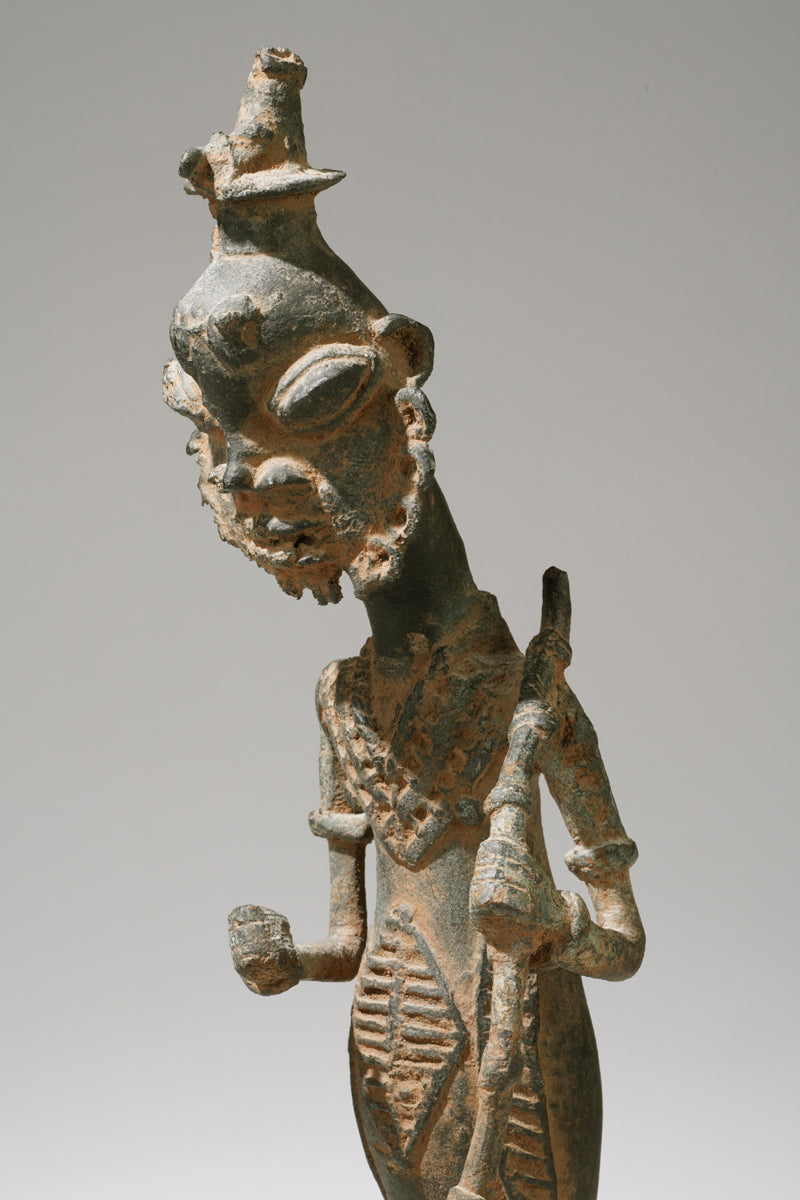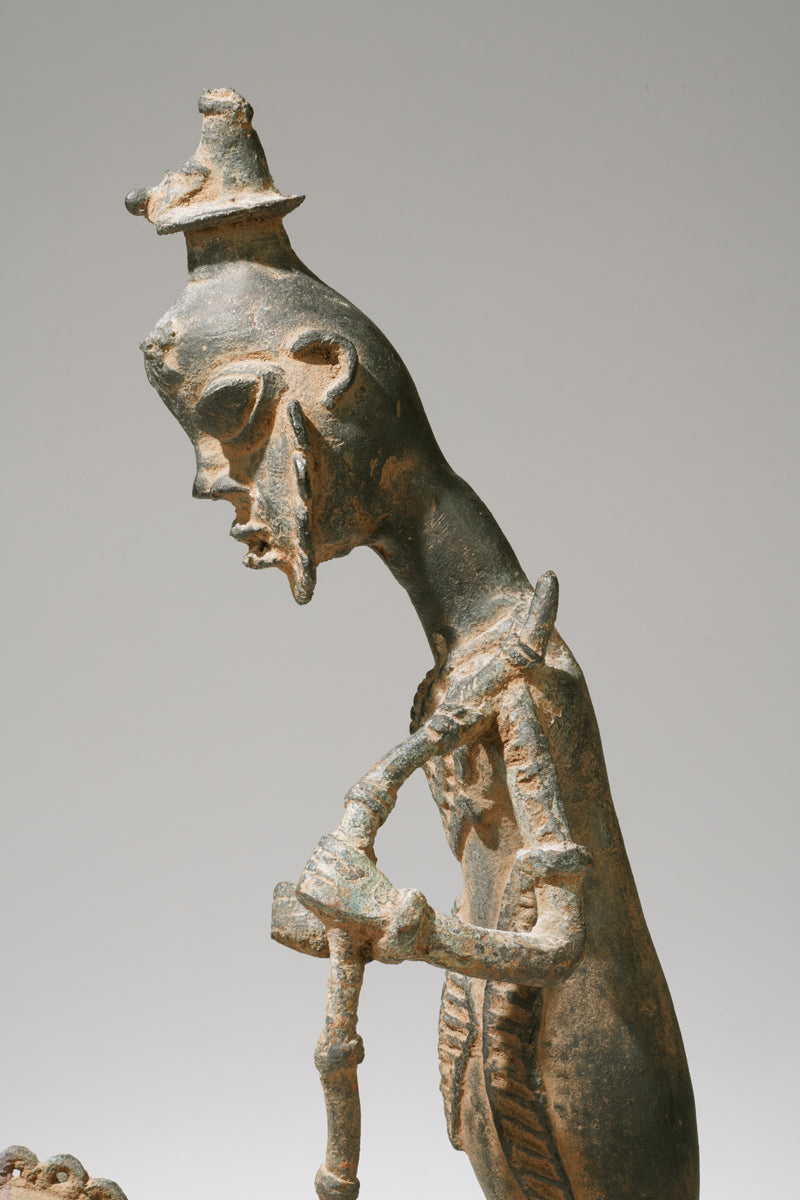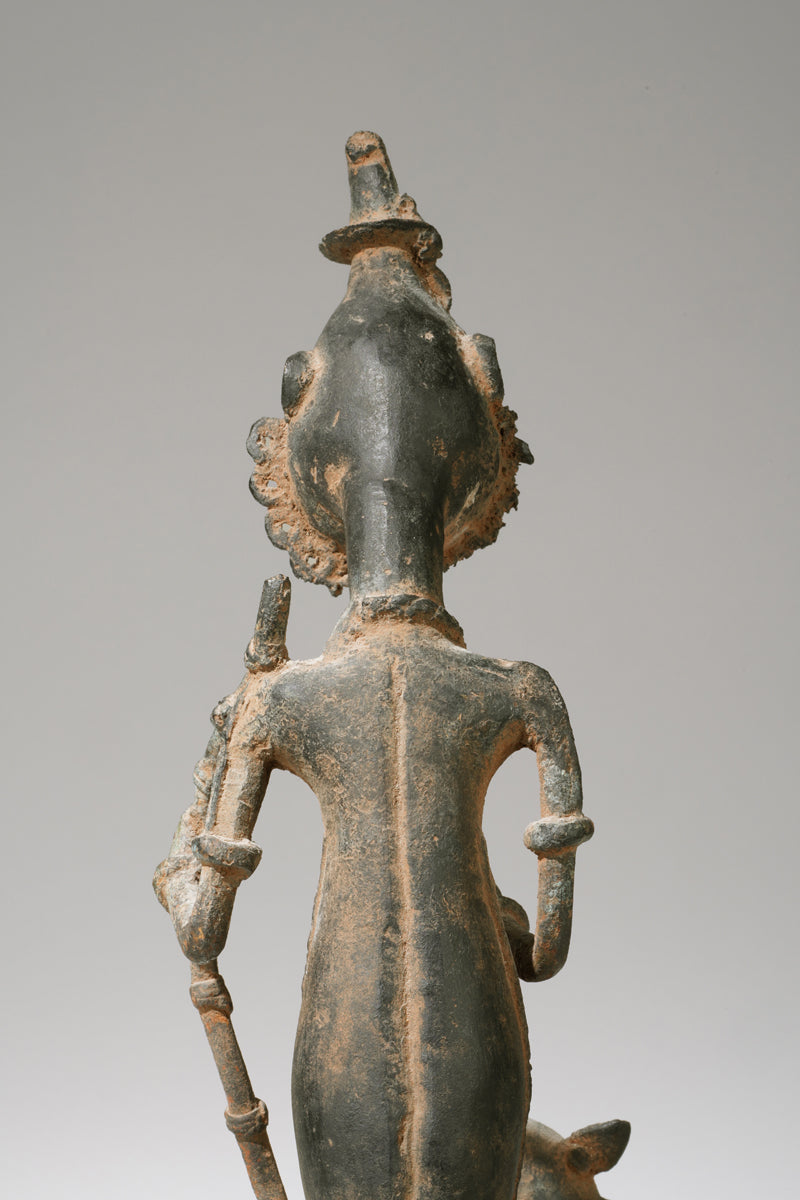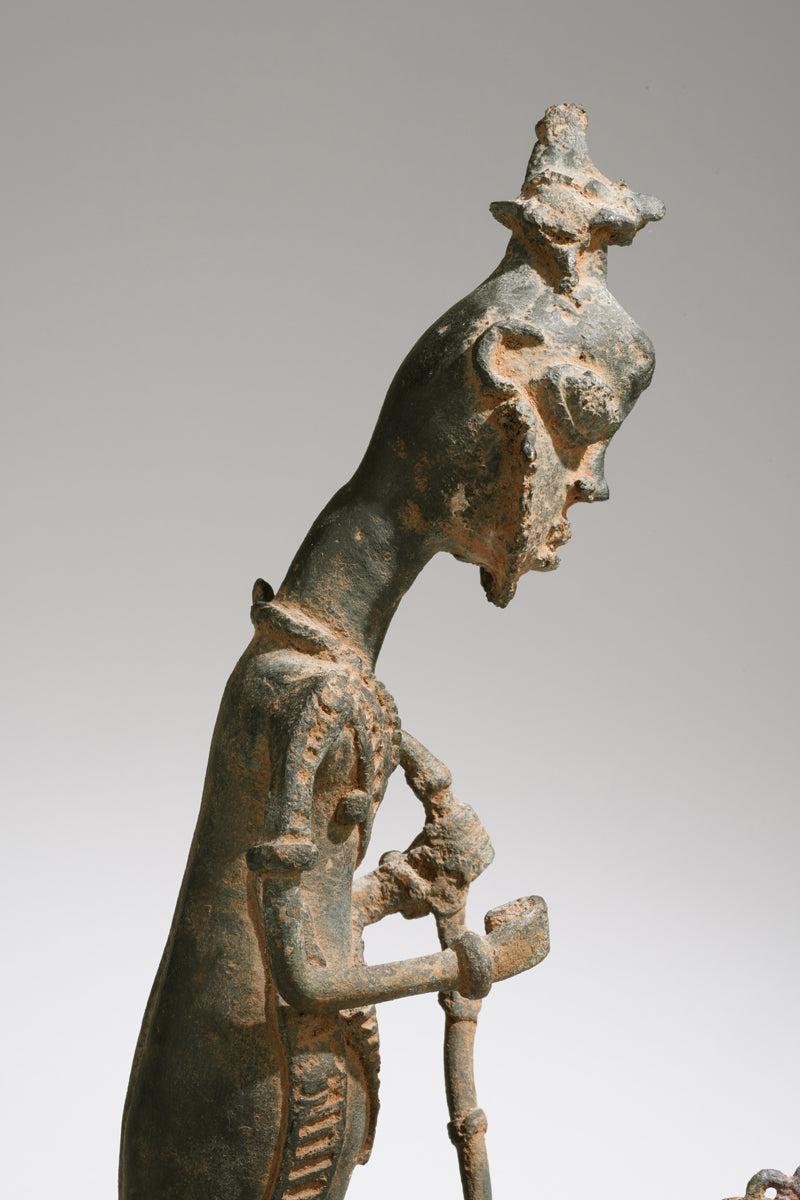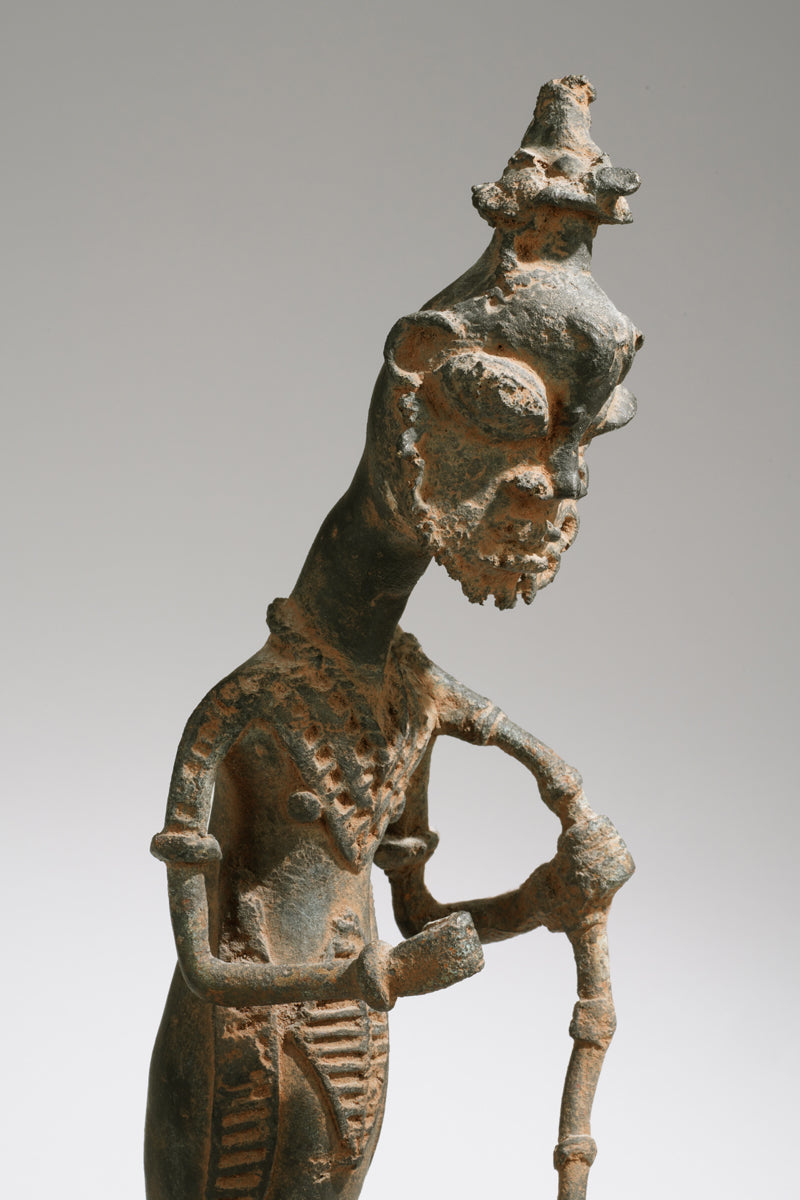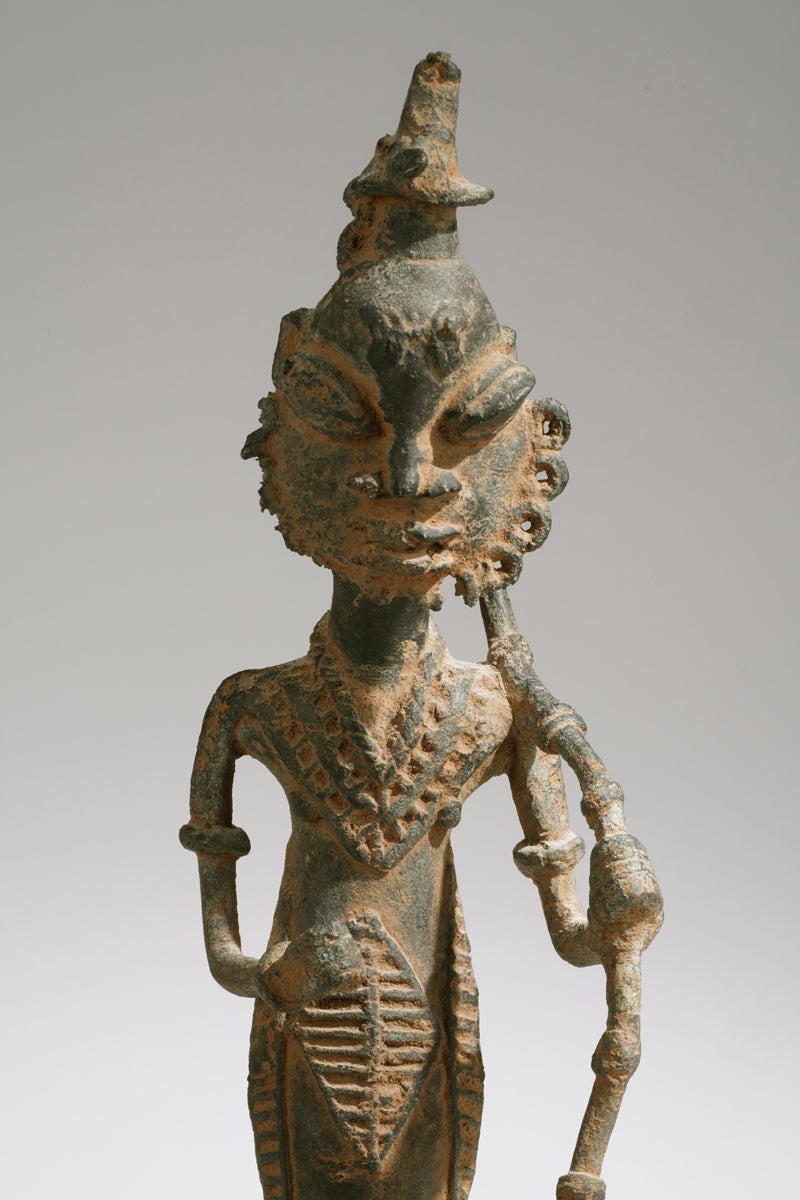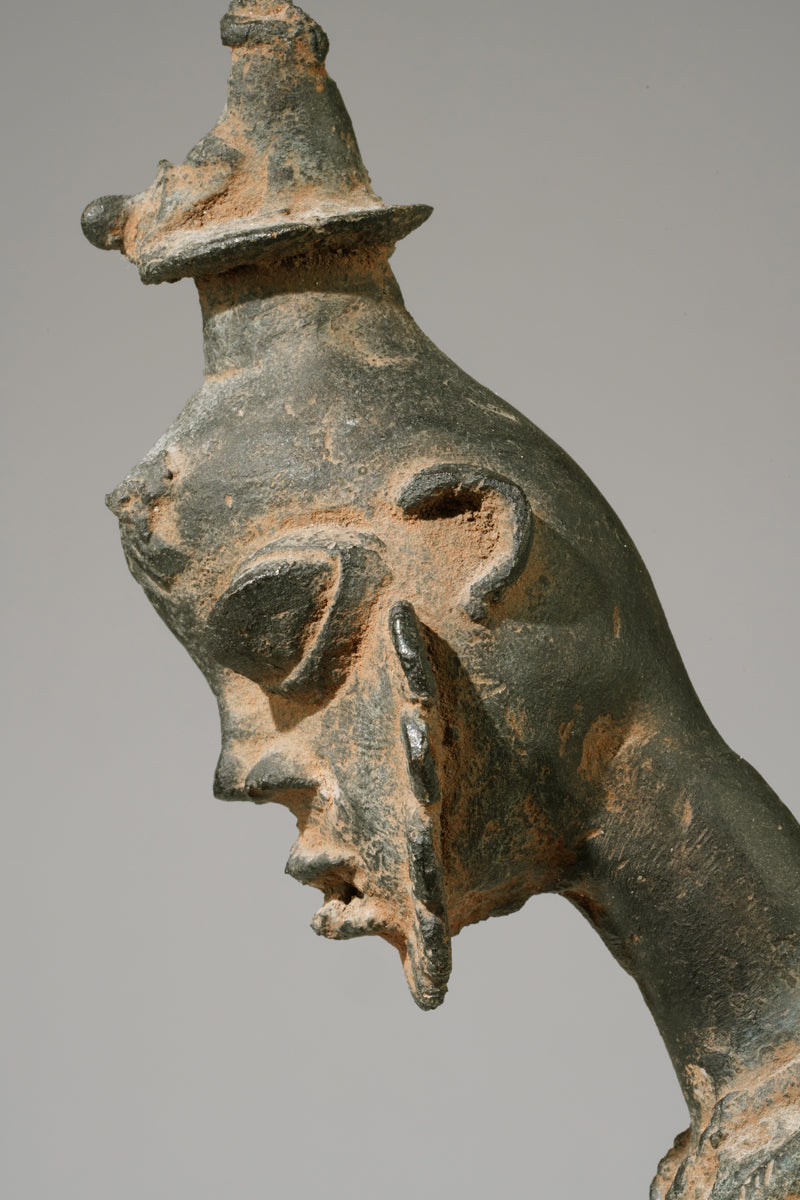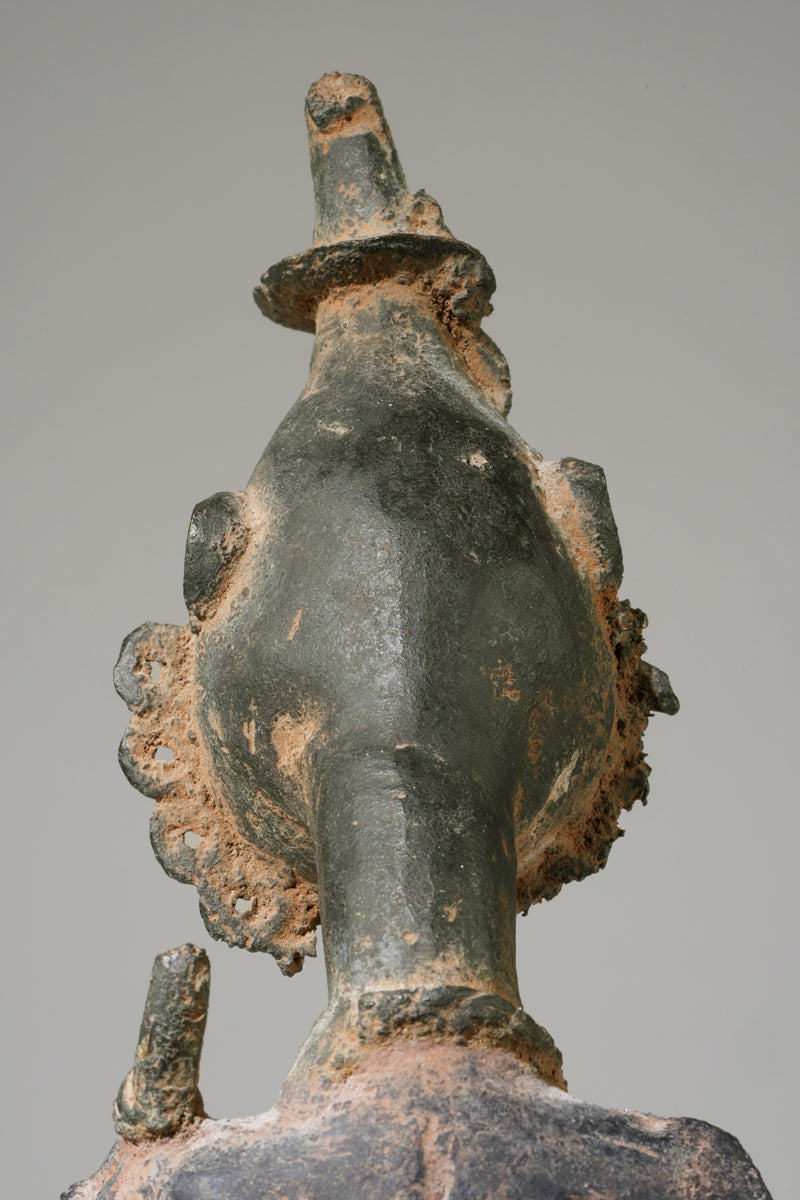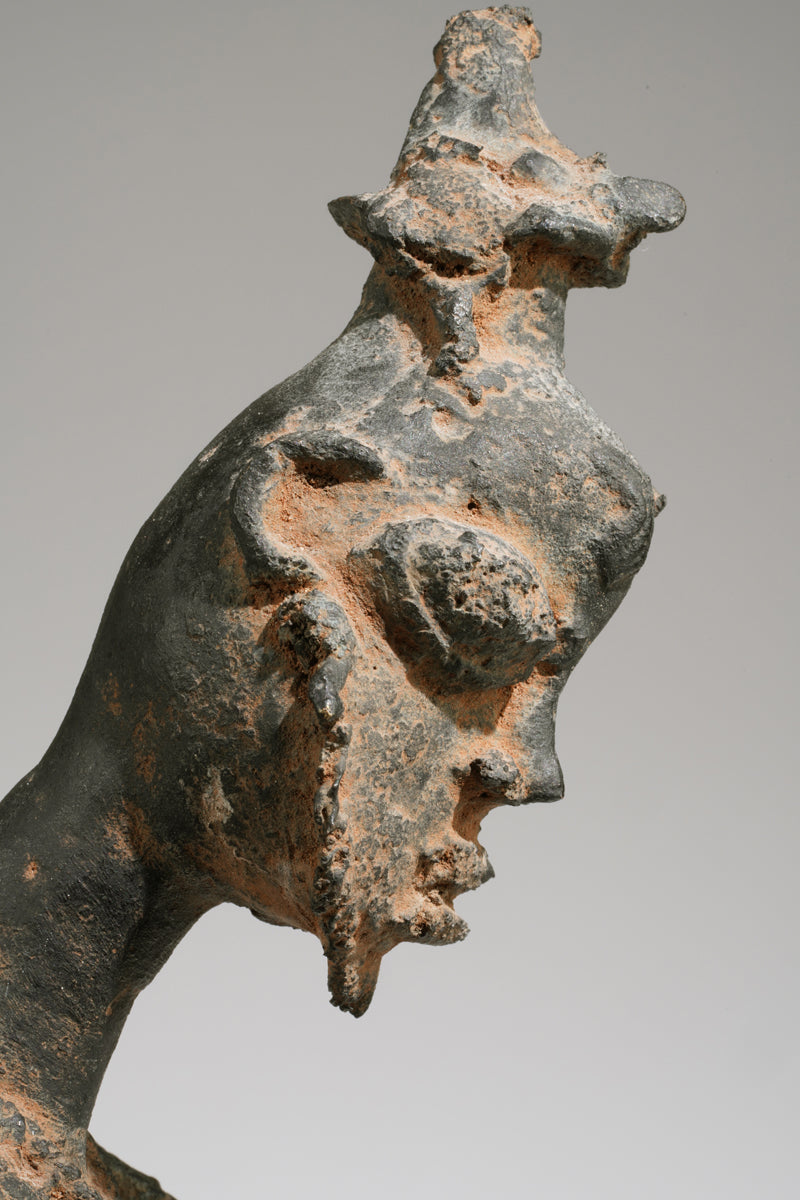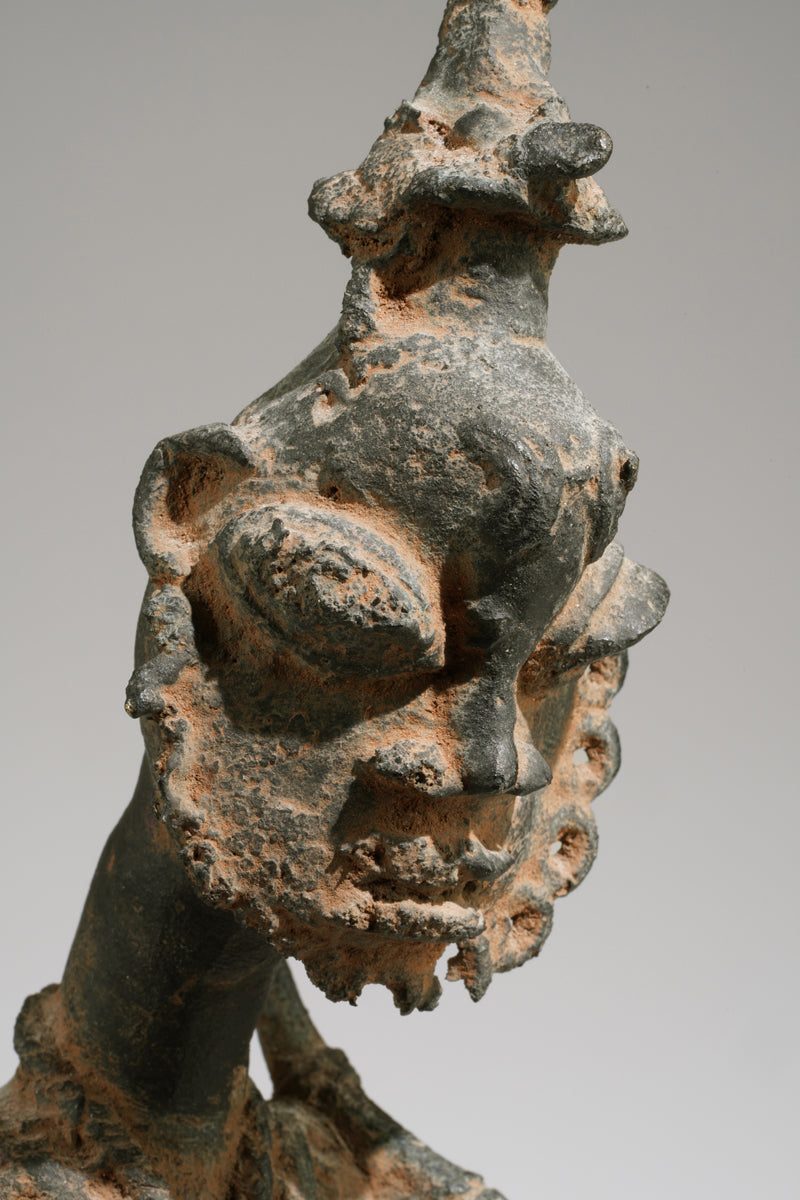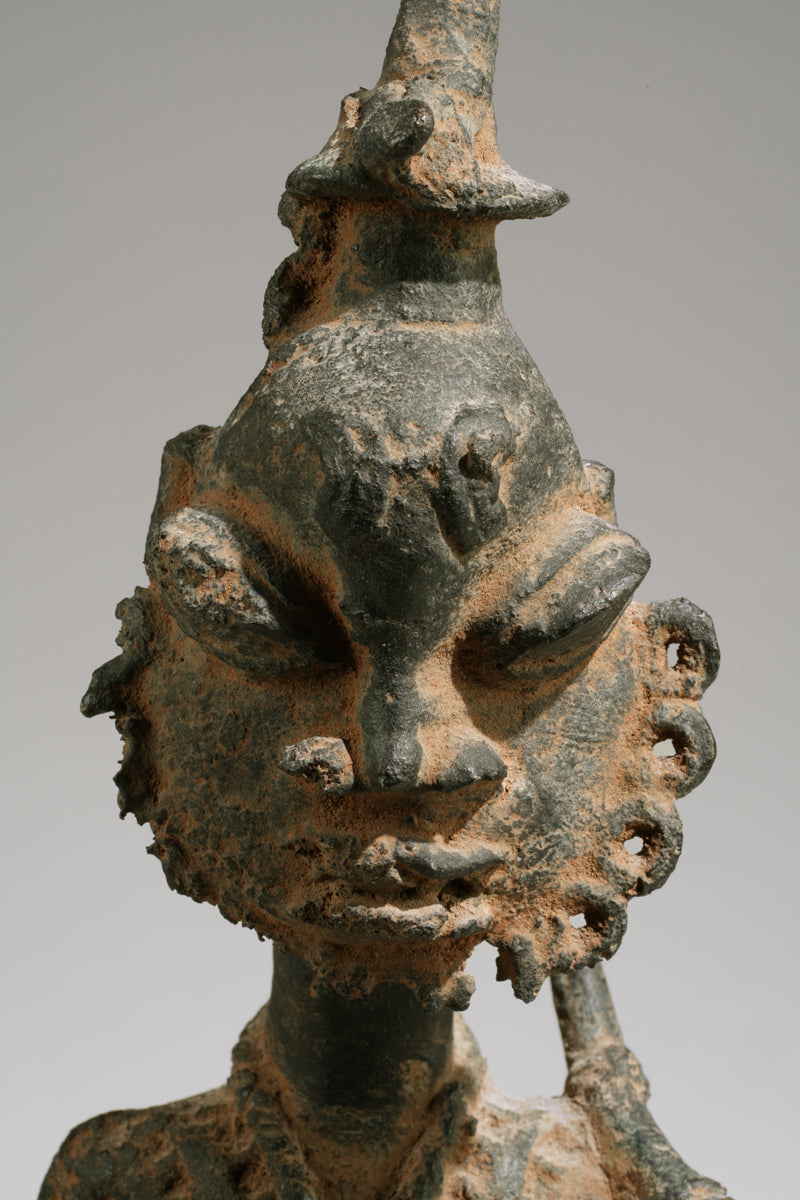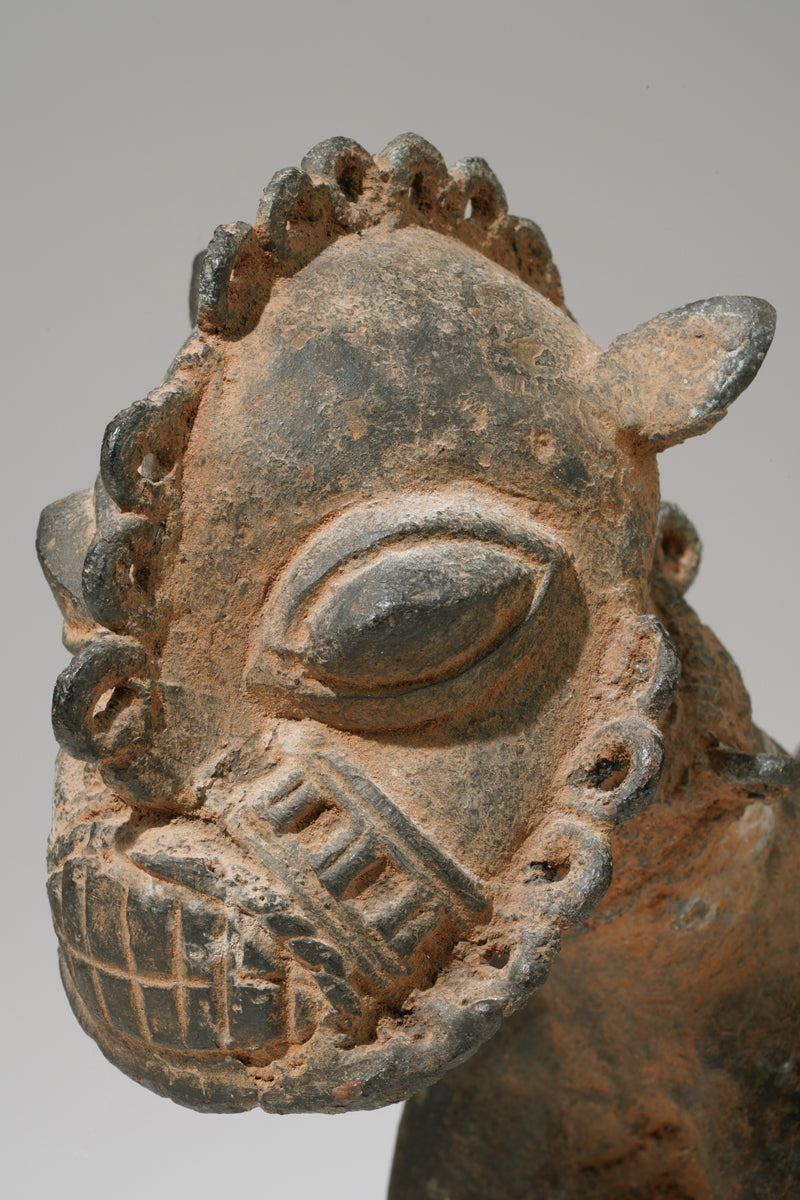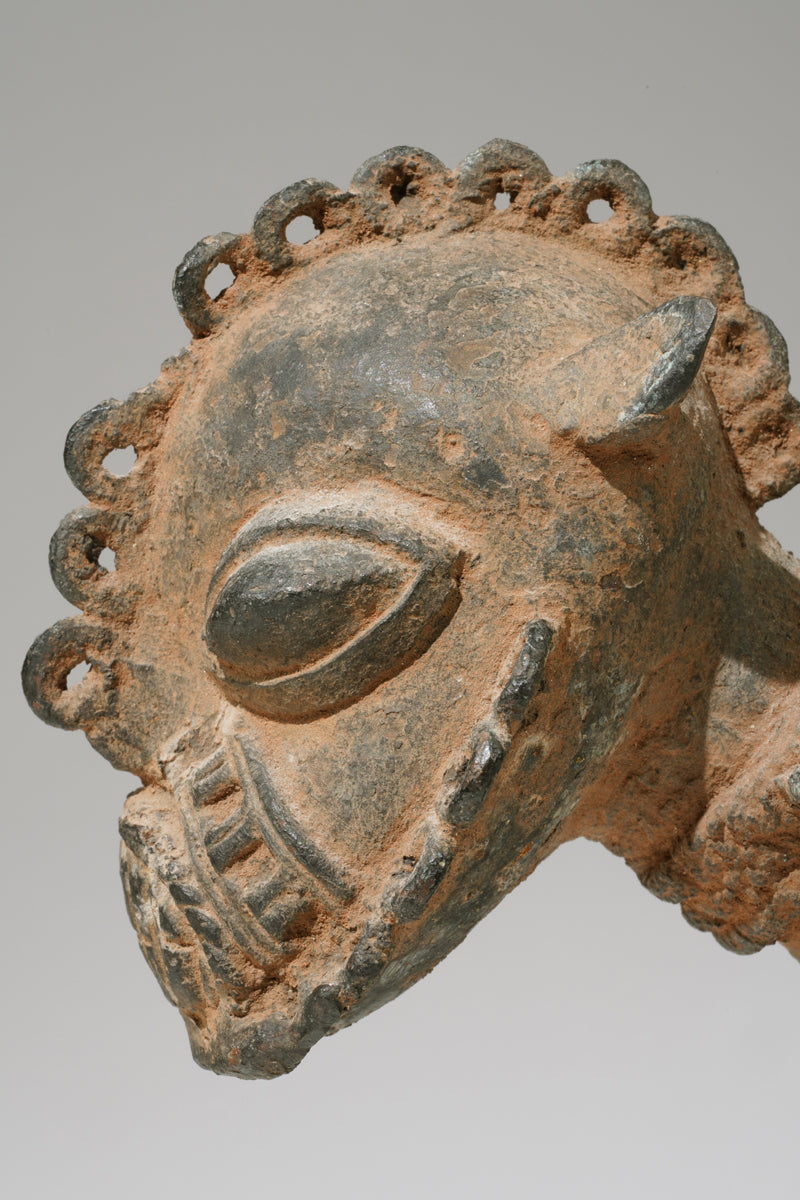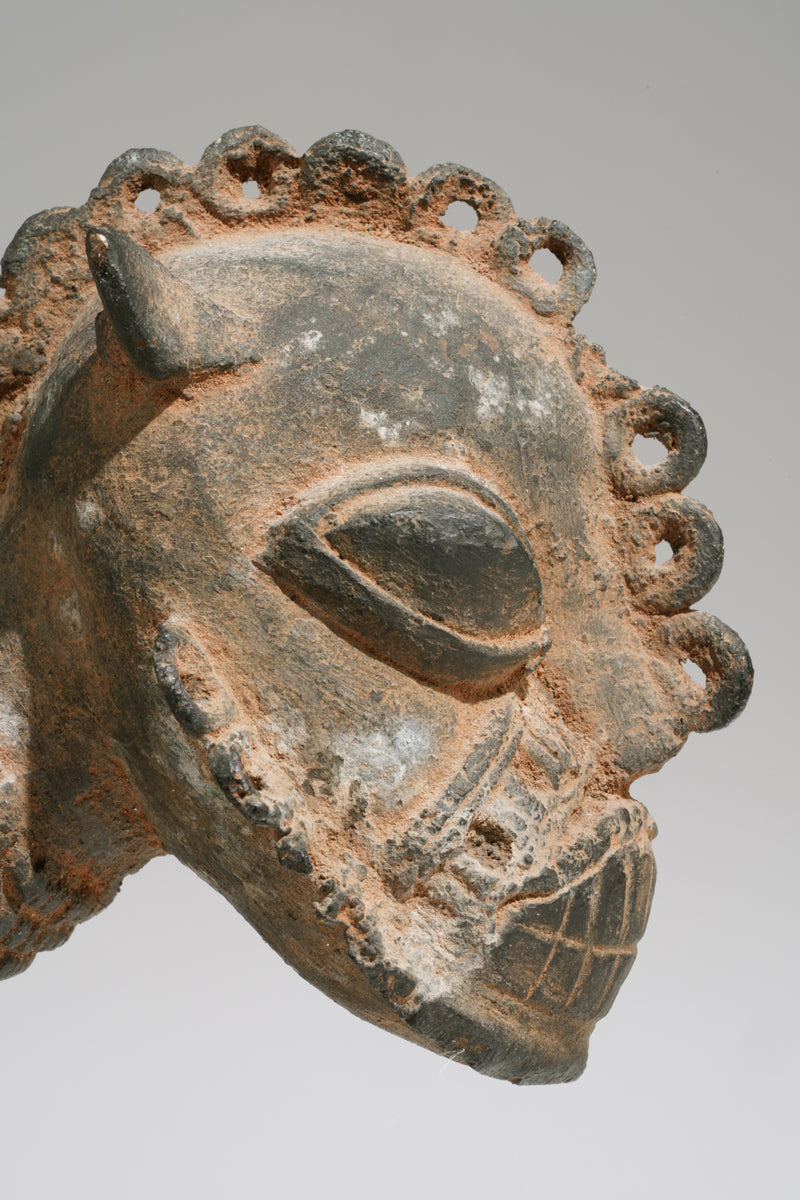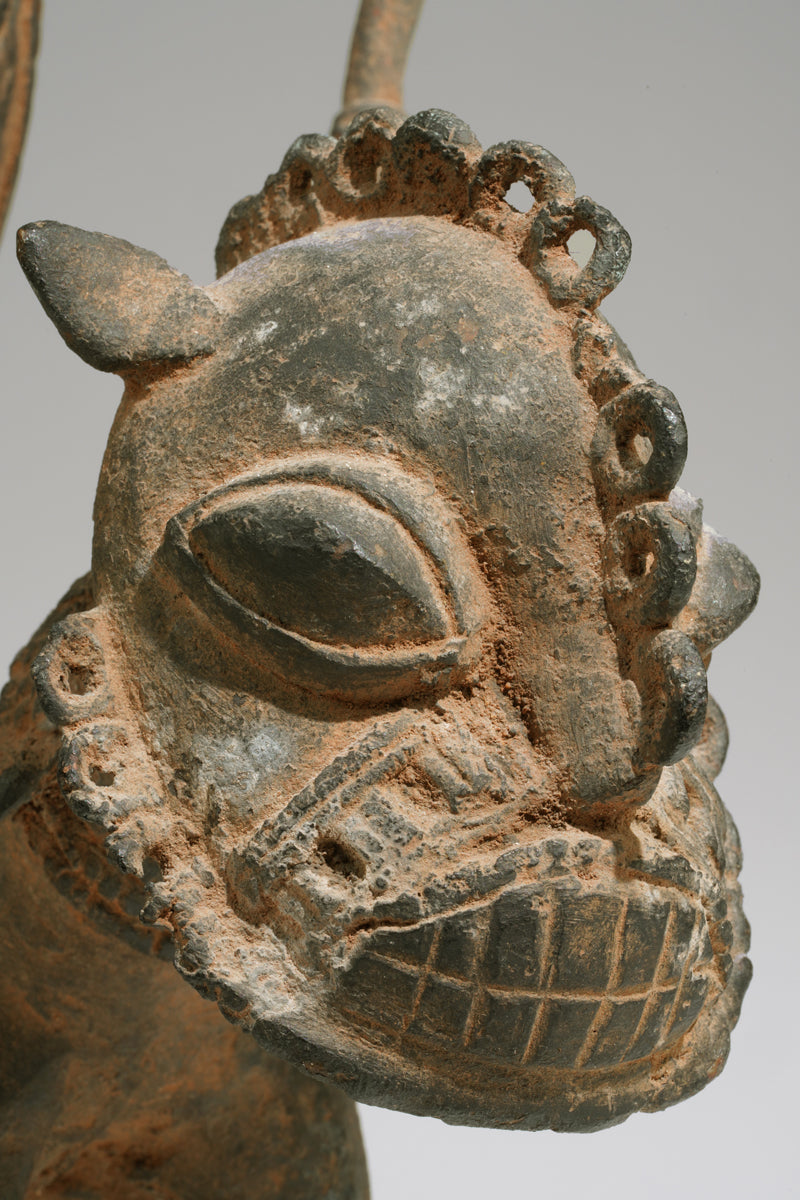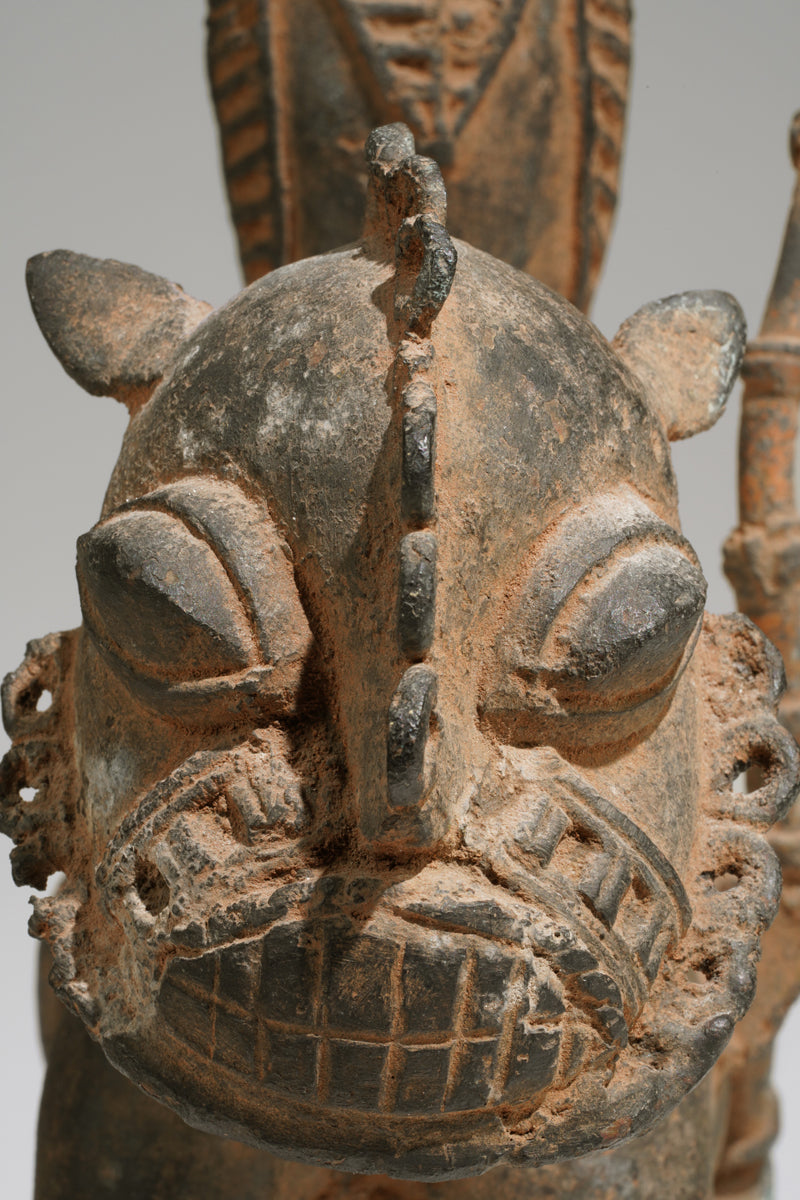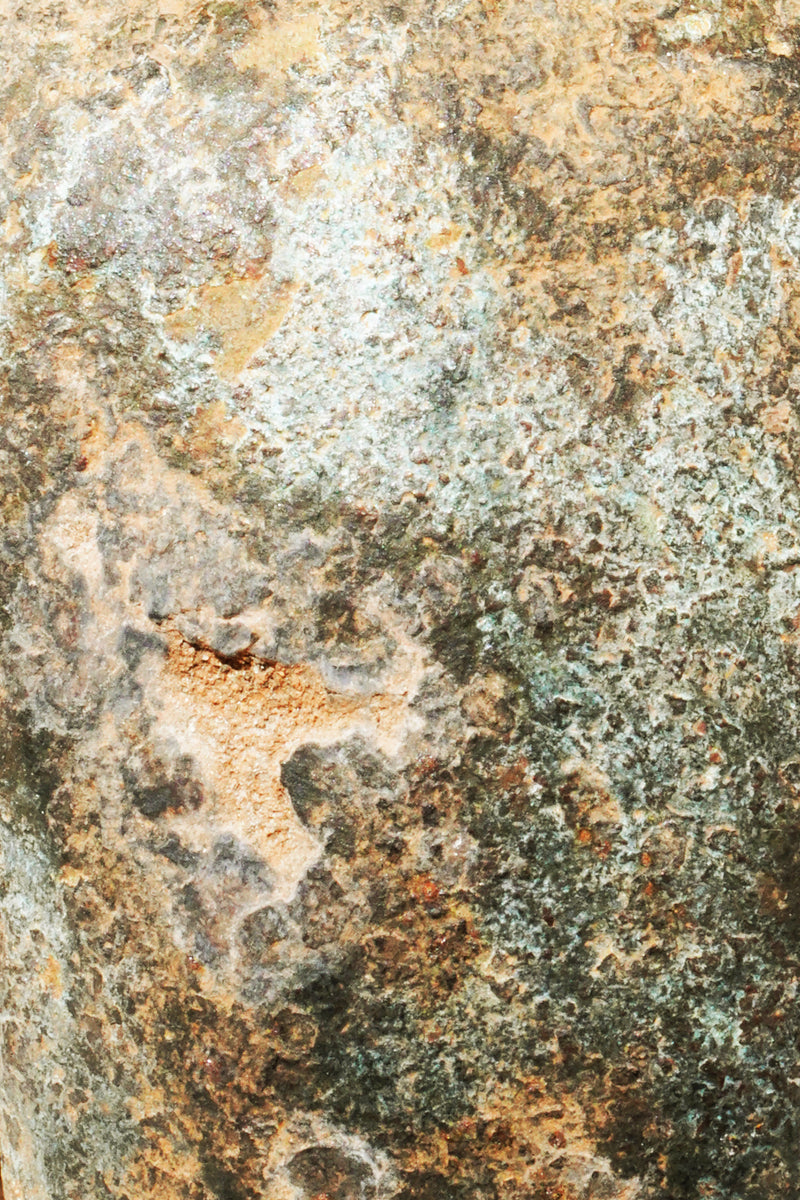wolfgang-jaenicke
An Ogboni bronze in shape of a horserider
An Ogboni bronze in shape of a horserider
Couldn't load pickup availability
An Ogboni bronze in shape of a horserider, holding a cerimonial staff in its hands.
To determine the age of such bronzes, several methods may be employed. One common approach is the line-scan technique; another is thermoluminescence analysis, provided that remnants of the casting core are present. In many cases, however, detailed magnifications can suffice, especially when they reveal a naturally developed, multilayered patina indicative of long-term oxidation processes. Based on our extensive experience in the Benin/Ife region—where we have commissioned several hundred analyses over the years—this particular bronze appears to exhibit considerable age. The characteristics observed would reasonably support a dating to the eighteenth century. This assessment is further substantiated by magnified images of the patina included at the end of the image sequence.
An Ogboni horseman cast in bronze represents a remarkable fusion of artistic craftsmanship and socio-religious symbolism within Yoruba culture. The Ogboni society, prevalent among the Yoruba people of southwestern Nigeria, functions as a secretive institution with political, judicial, and spiritual authority. It is especially known for its veneration of the Earth deity and its role in mediating between the living and ancestral forces. Artworks associated with the Ogboni are not merely decorative; they serve as sacred instruments within a complex web of ritual and social hierarchy.¹
The depiction of a horseman in this context is especially significant. In Yoruba visual culture, equestrian figures often symbolize elevated status, martial prowess, or spiritual authority. Horse-riding itself is historically reserved for elites, such as kings, warriors, or high-ranking religious figures. When cast in bronze and linked to the Ogboni, the horseman becomes an emblem not only of prestige but also of ancestral presence and esoteric power. He may embody a deceased elder of the society, a mythic founder, or an archetype of spiritual guardianship. His elevated position on horseback marks him as one who traverses boundaries—between earthly and spiritual realms, between the visible and the hidden.²
The use of bronze (more accurately brass, given the high zinc content typical of Yoruba metalwork) is itself a declaration of importance. Lost-wax casting techniques, employed for centuries in Yoruba centers such as Ife and Owo, allow for intricate detailing and durable form. These materials and methods are traditionally reserved for objects of ritual or courtly function, suggesting that the horseman served a purpose far beyond mere commemoration. His physical attributes—gestures, attire, and iconographic elements—reinforce his role within the secretive Ogboni cosmology. Items held in the hands or worn on the body often bear coded references to spiritual authority, ancestral lineage, or societal rank.³
Such a sculpture would likely have been used in ritual settings, perhaps placed in shrines, ancestral groves, or meeting houses associated with the Ogboni lodge. It could also have functioned as a visual mnemonic for oral histories and spiritual teachings passed down within the society. The bronze horseman thus acts not only as a work of art but as a locus of memory, authority, and sacred presence. Its continued study contributes to a deeper understanding of how form, material, and iconography intersect within Yoruba systems of belief and power.⁴
The dating of such pieces is complicated by the longevity of metalworking traditions and the prevalence of reproductions in the twentieth century. Authenticity is typically assessed through technical analysis of casting methods, surface patination, and stylistic comparison with documented examples held in ethnographic collections or referenced in early colonial reports. Nonetheless, whether historical or contemporary, the Ogboni horseman retains a potent symbolic charge, encapsulating the enduring interplay of aesthetics, ritual, and social order in Yoruba thought.⁵
-
Drewal, Henry John, and Pemberton, John. Yoruba: Nine Centuries of African Art and Thought. New York: Center for African Art, 1989.
-
Lawal, Babatunde. "Some Aspects of Yoruba Aesthetics." Africa: Journal of the International African Institute, vol. 47, no. 2, 1977, pp. 165–185.
-
Willett, Frank. Ife in the History of West African Sculpture. London: Thames and Hudson, 1967.
-
Thompson, Robert Farris. Flash of the Spirit: African and Afro-American Art and Philosophy. New York: Vintage Books, 1983.
- Fagg, William. Nigerian Images. London: Lund Humphries, 1963.
Height: 48 cm
Weight: 4,7 kg
